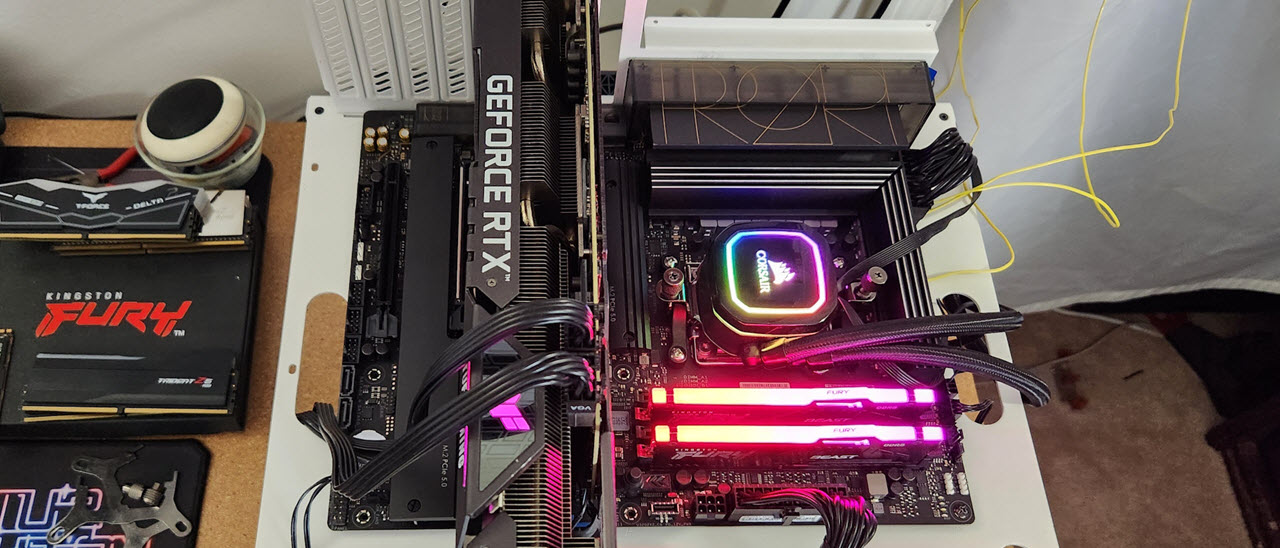Why you can trust Tom's Hardware
Firmware
Asus’ BIOS on the ProArt uses a black background with blue highlights and white/gray writing. Asus starts in an Easy Mode that displays high-level information, including CPU and memory clock speeds, temperatures, fan speeds, storage information, etc. Advanced Mode has several headers across the top that drop down additional options. The BIOS is one of my favorites, as almost everything you need isn’t buried deep within menus, and the options are typically plentiful as they are here.

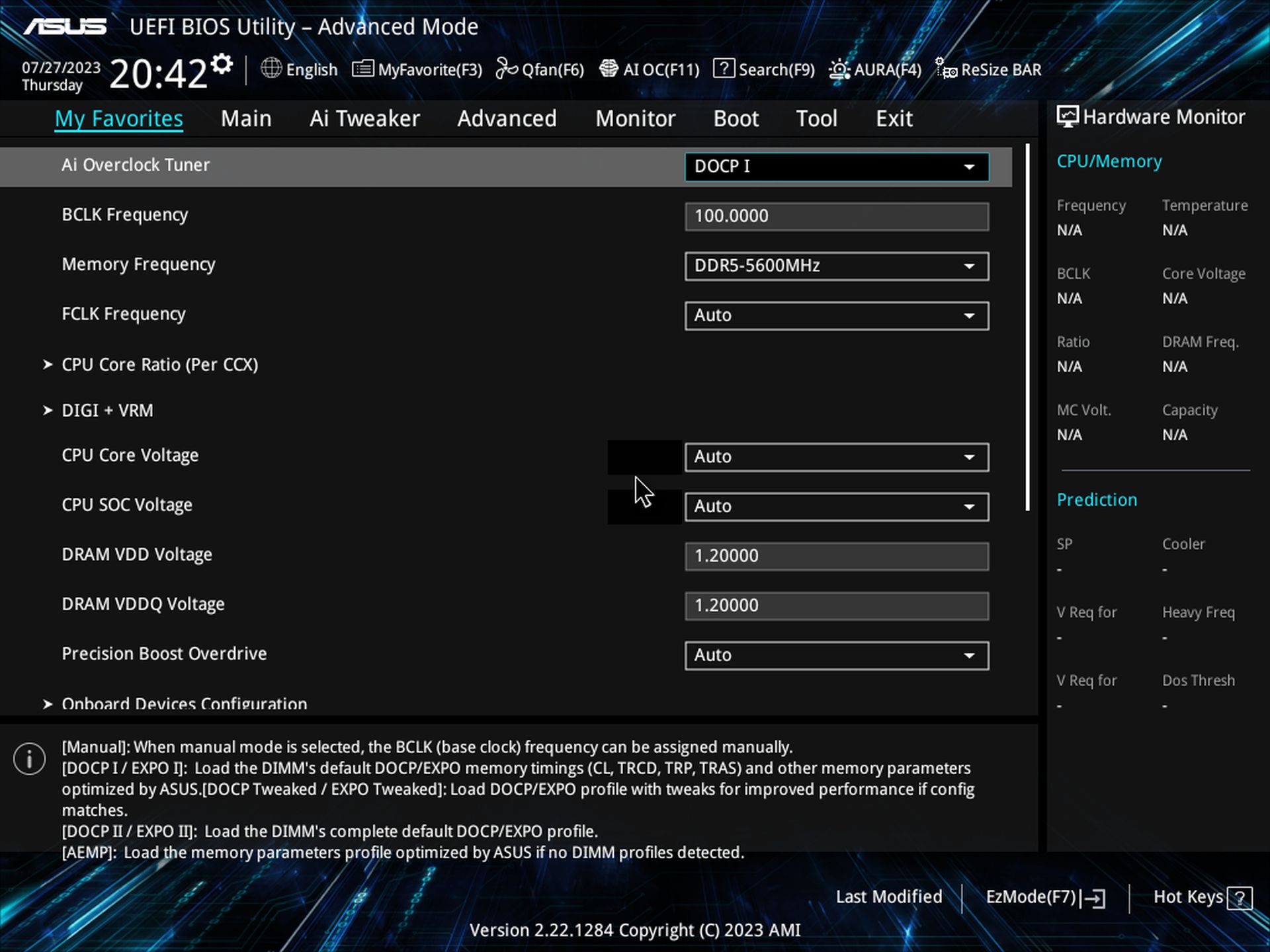
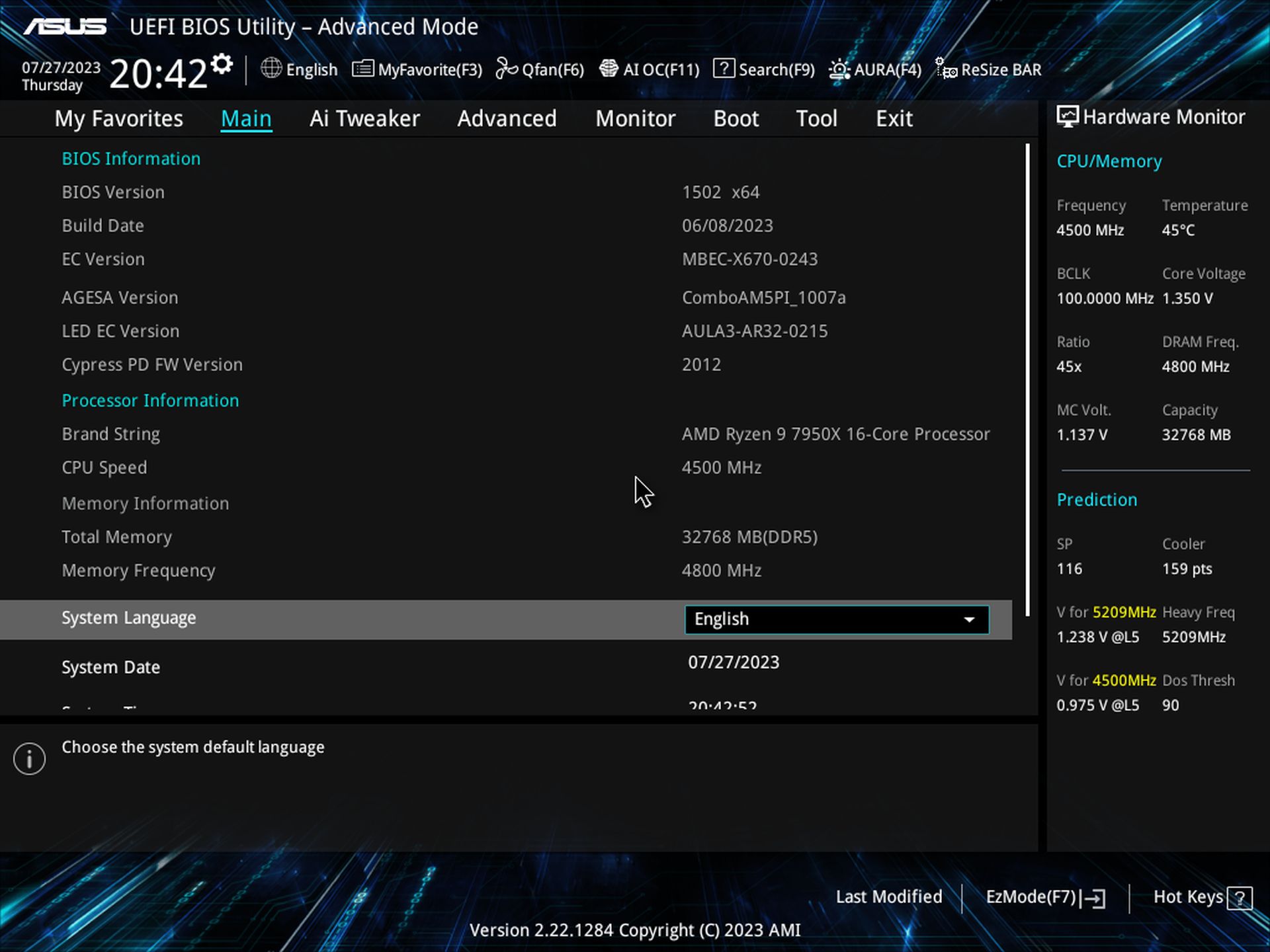
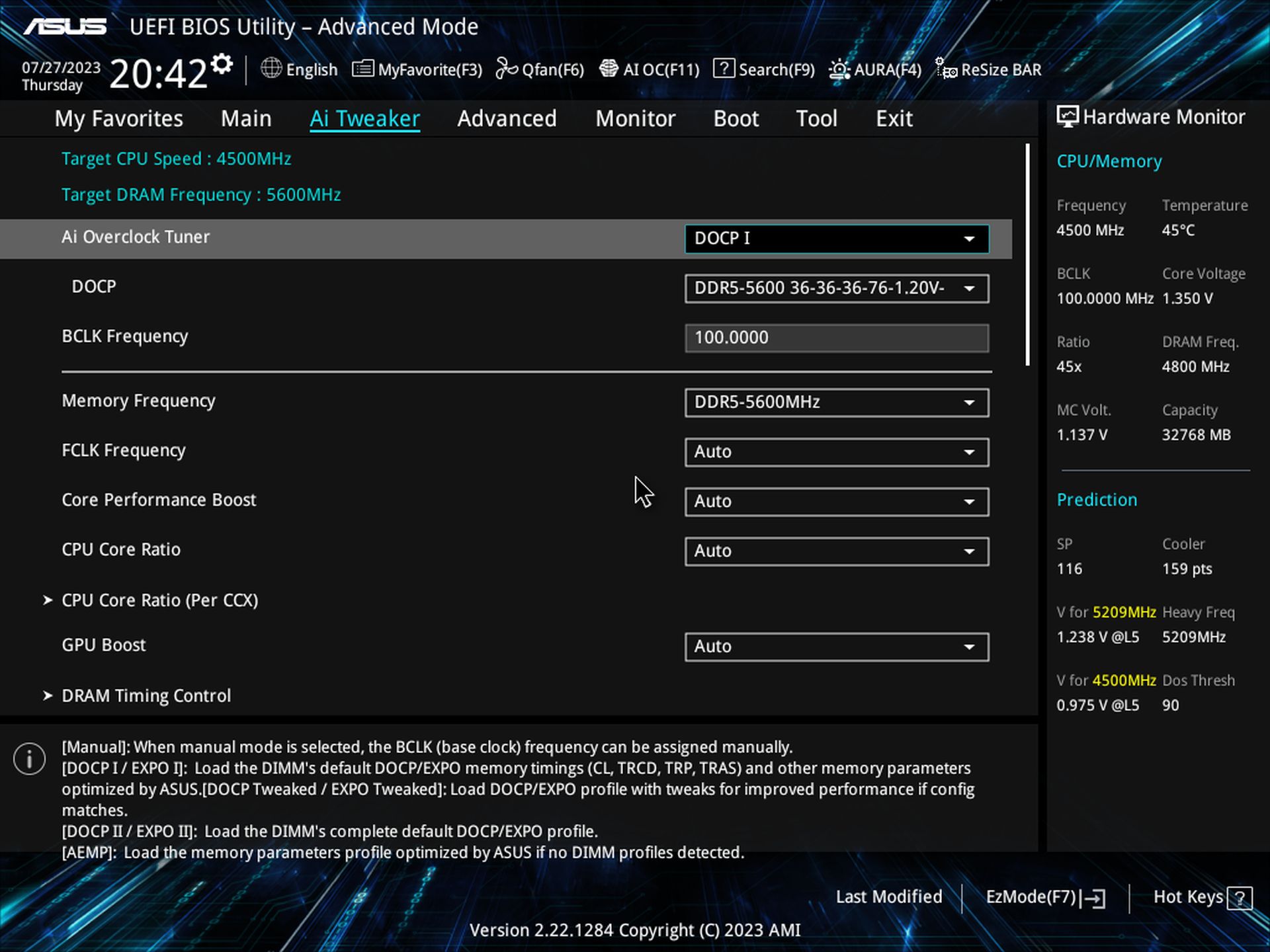

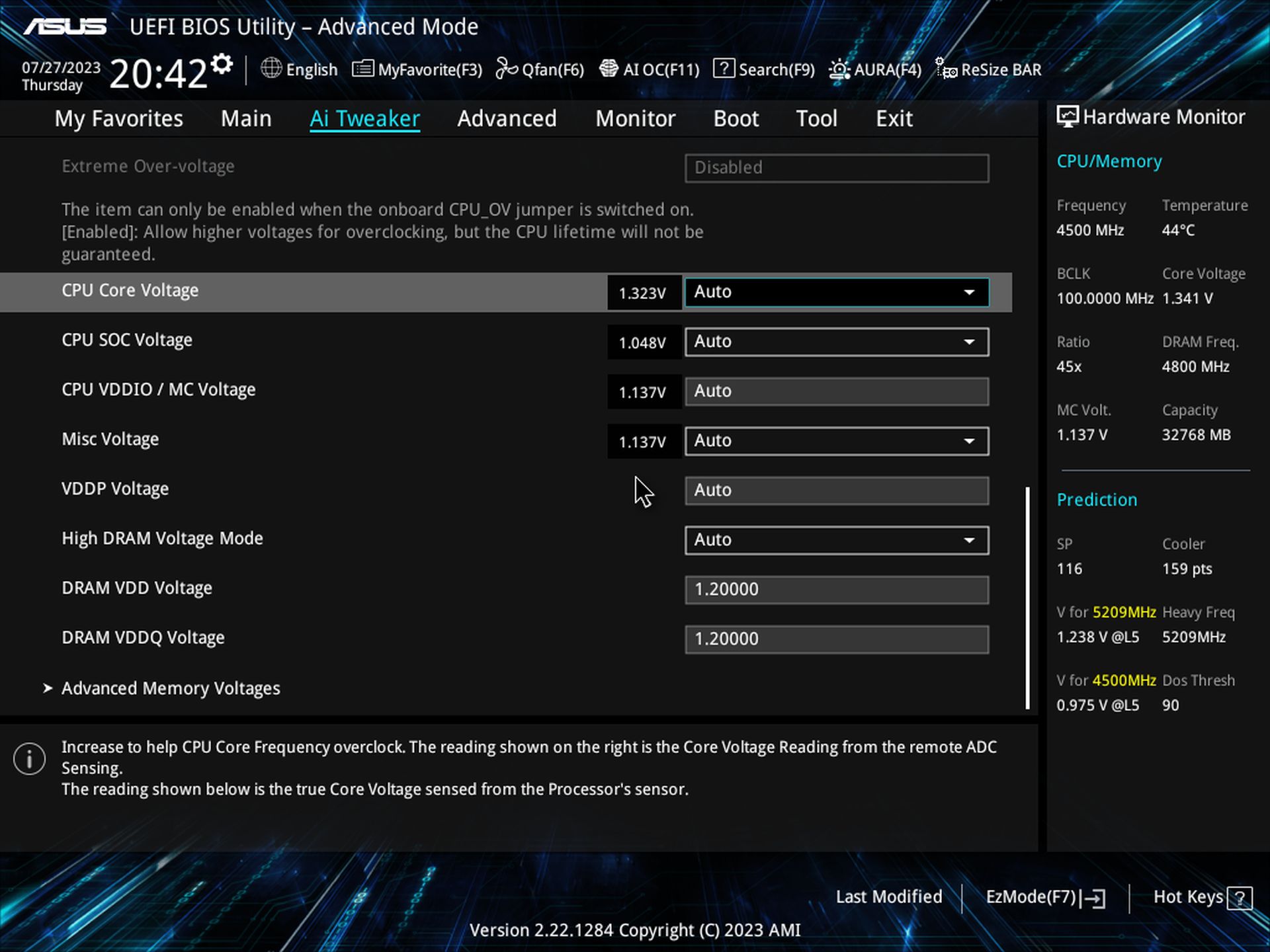
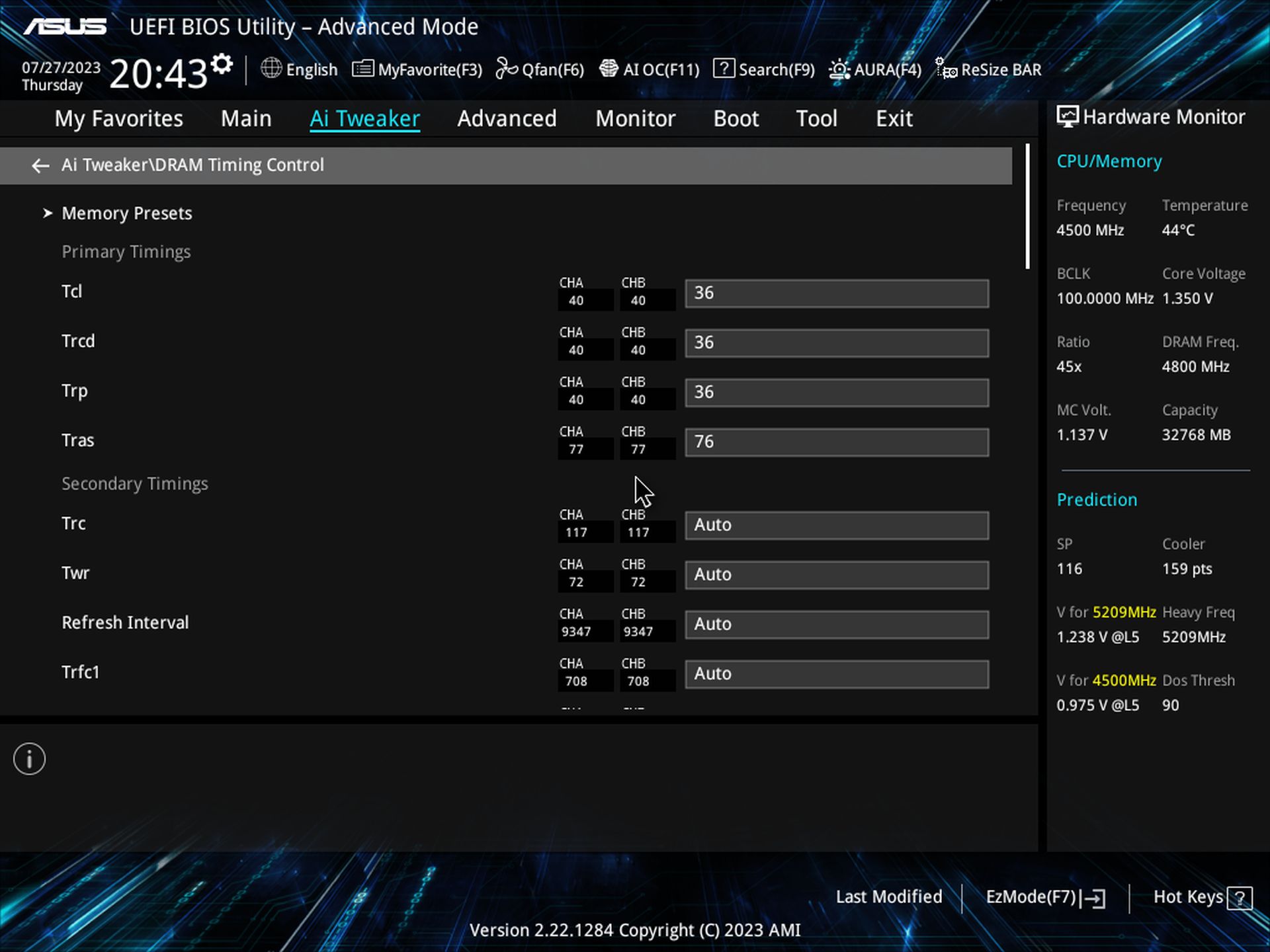

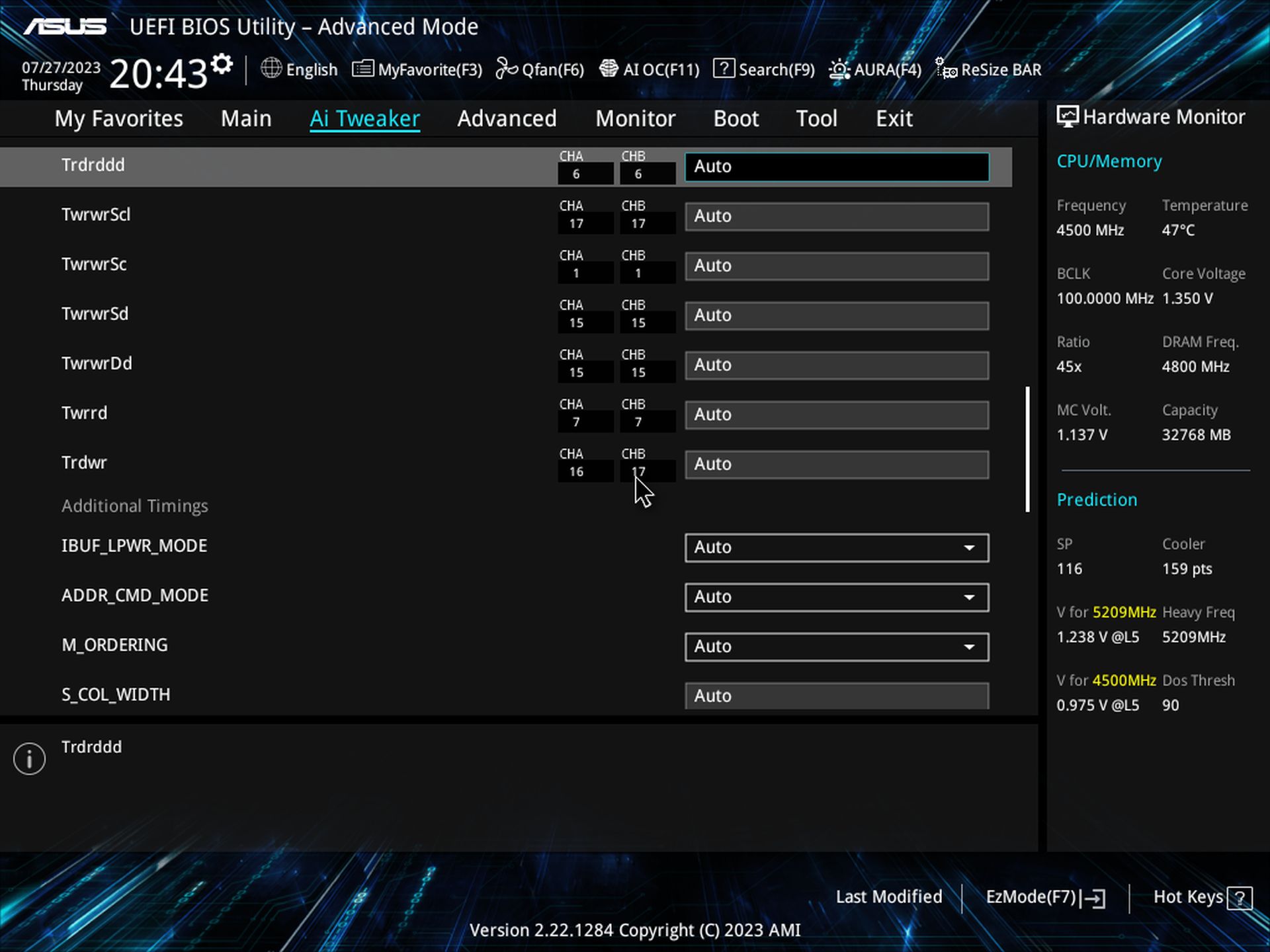

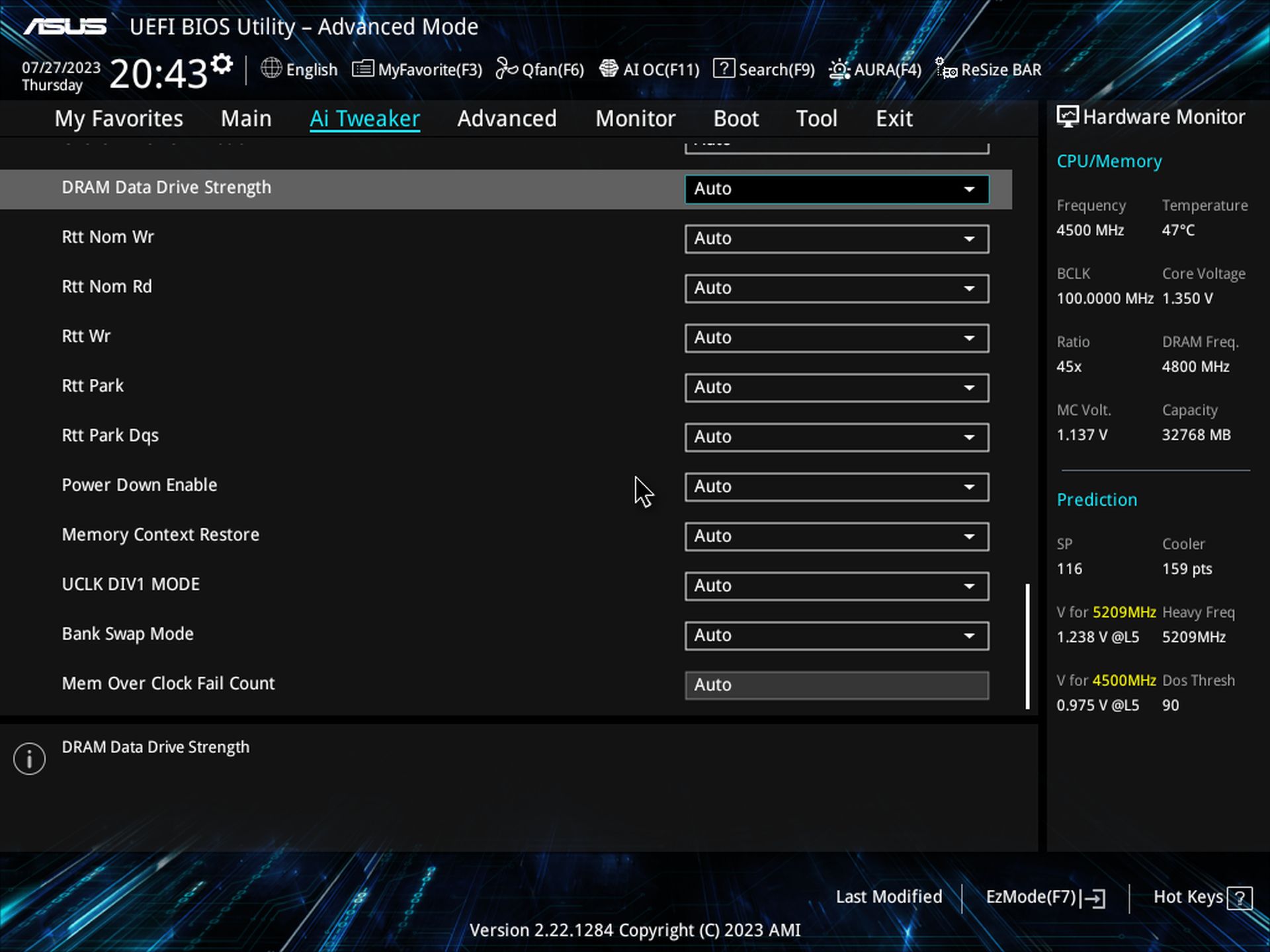

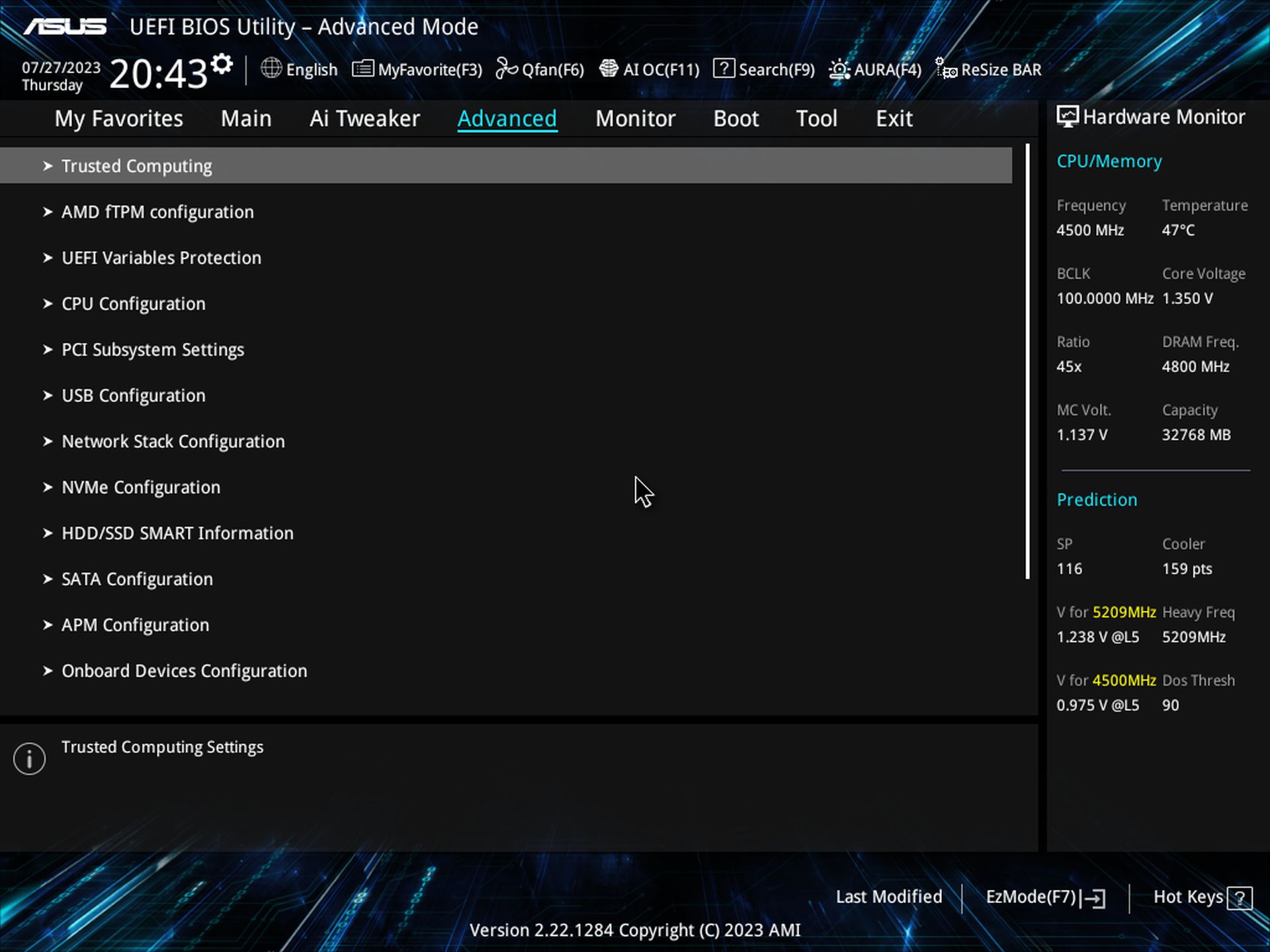
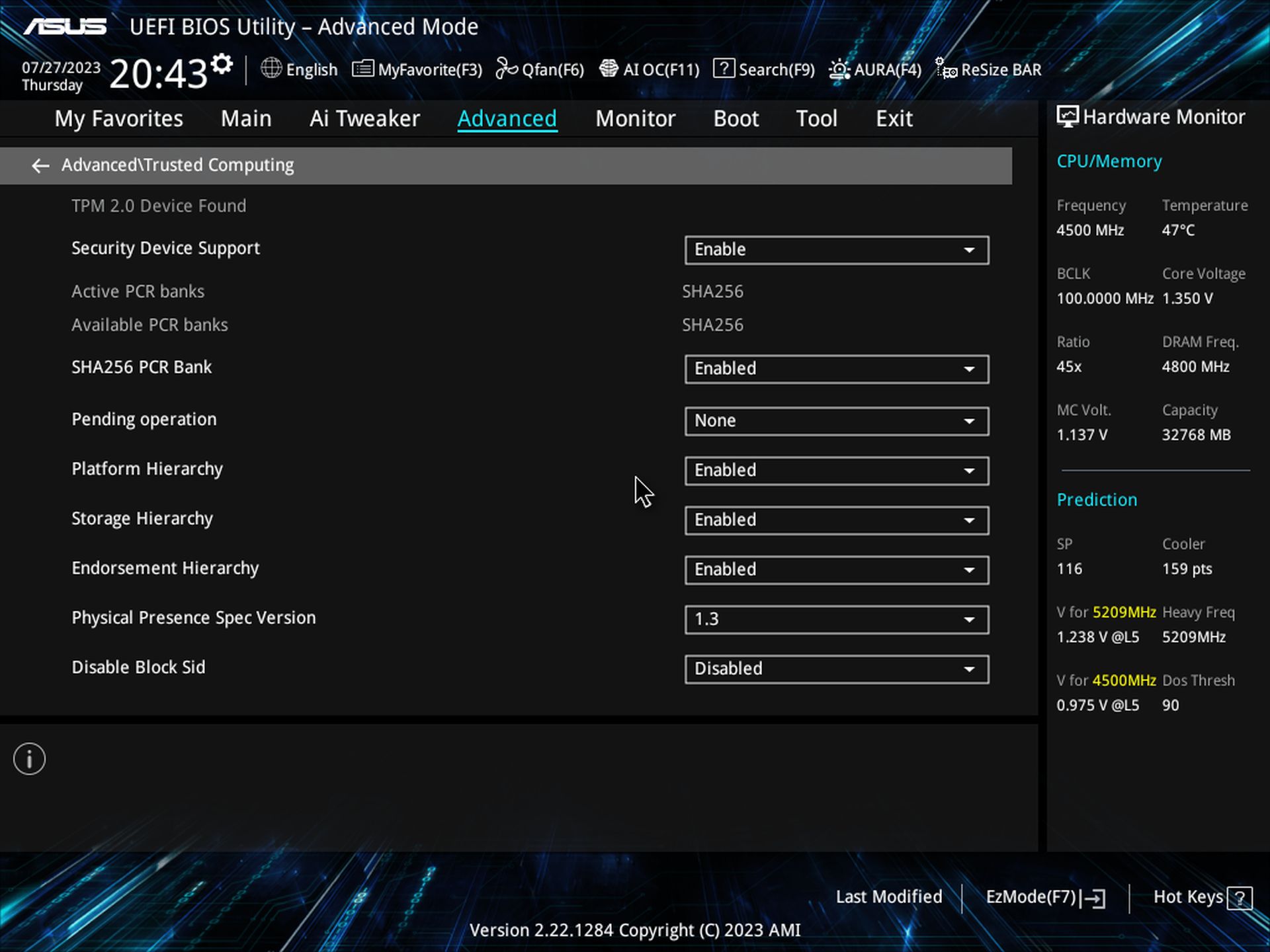
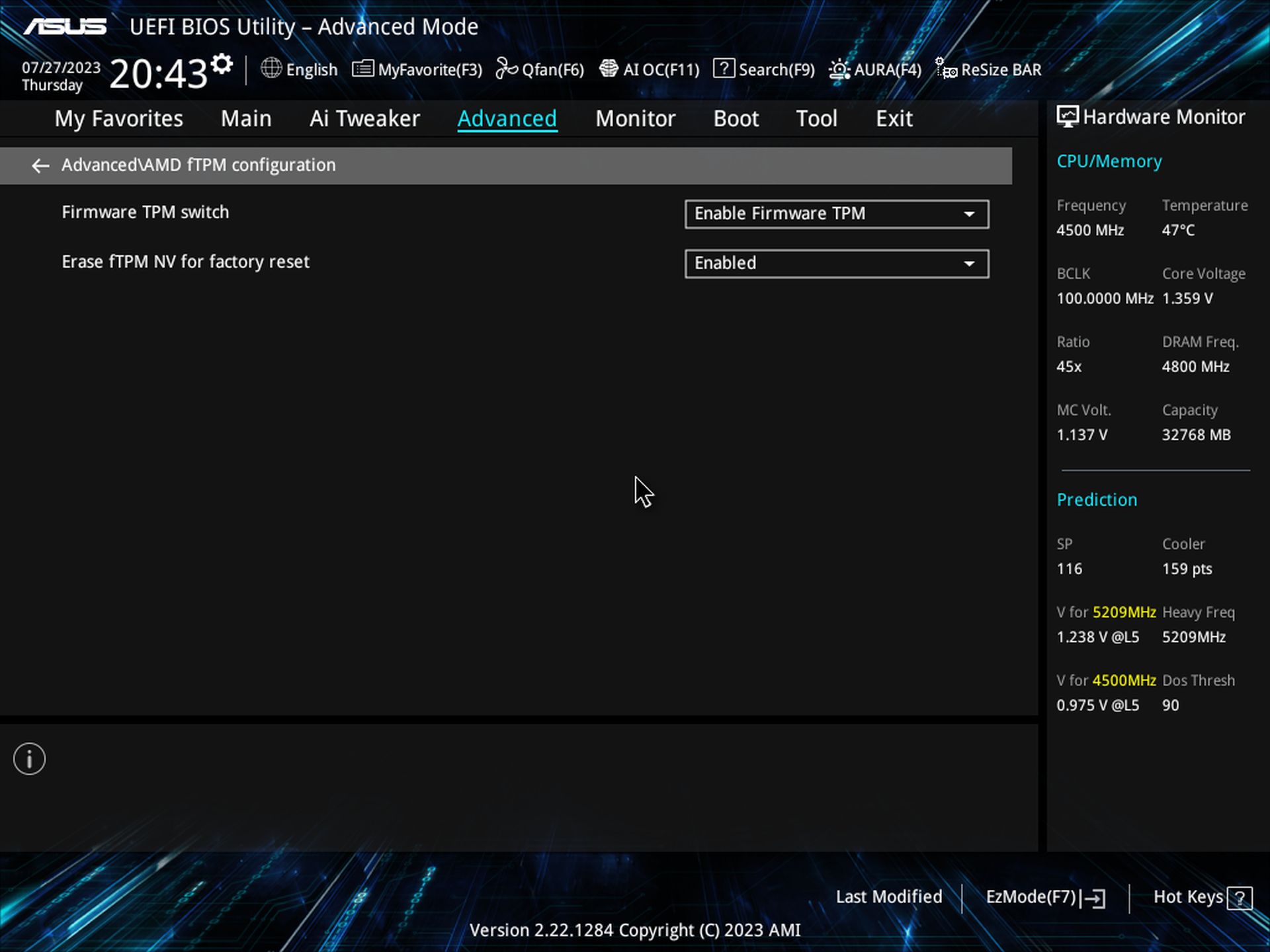
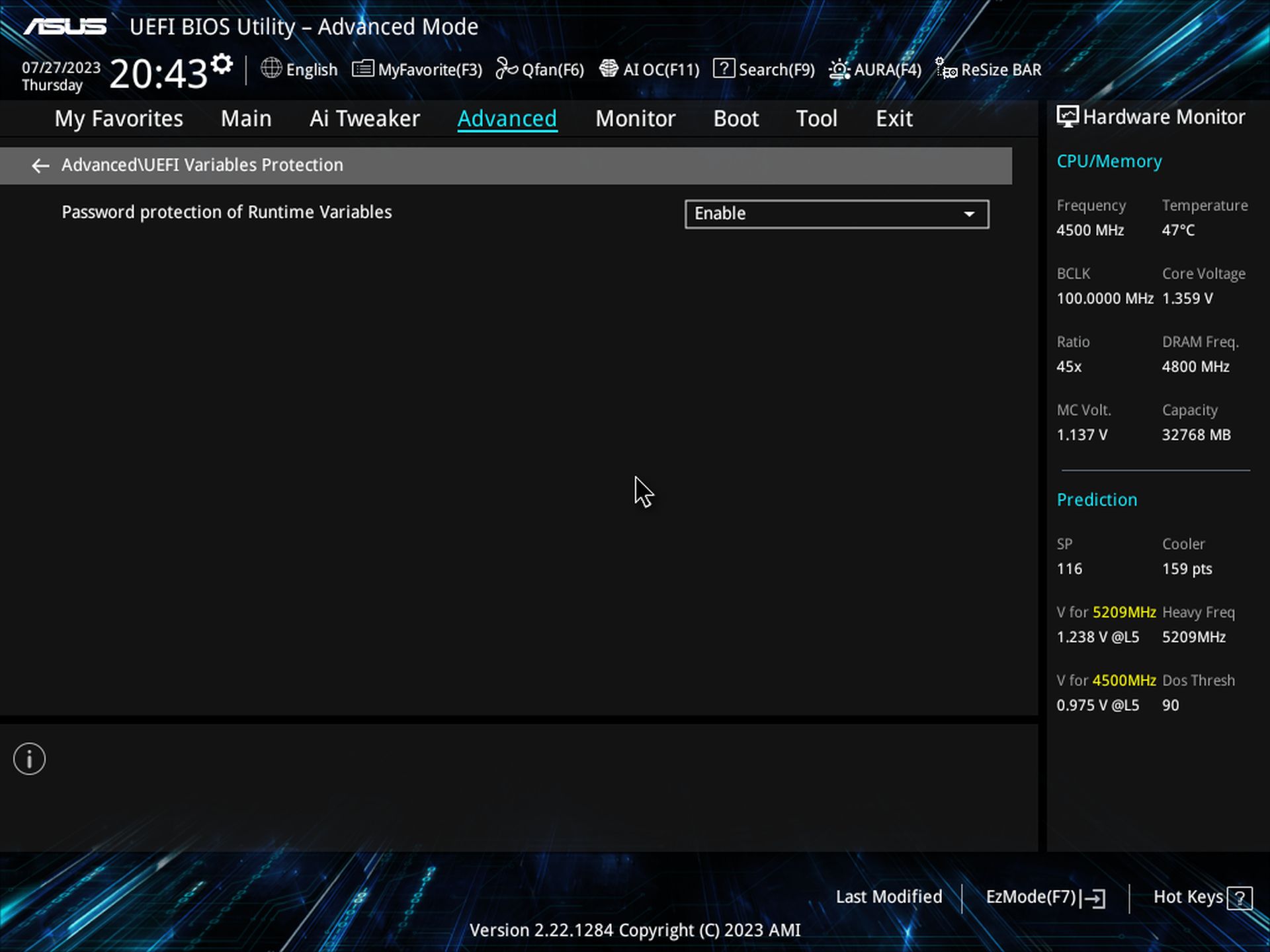
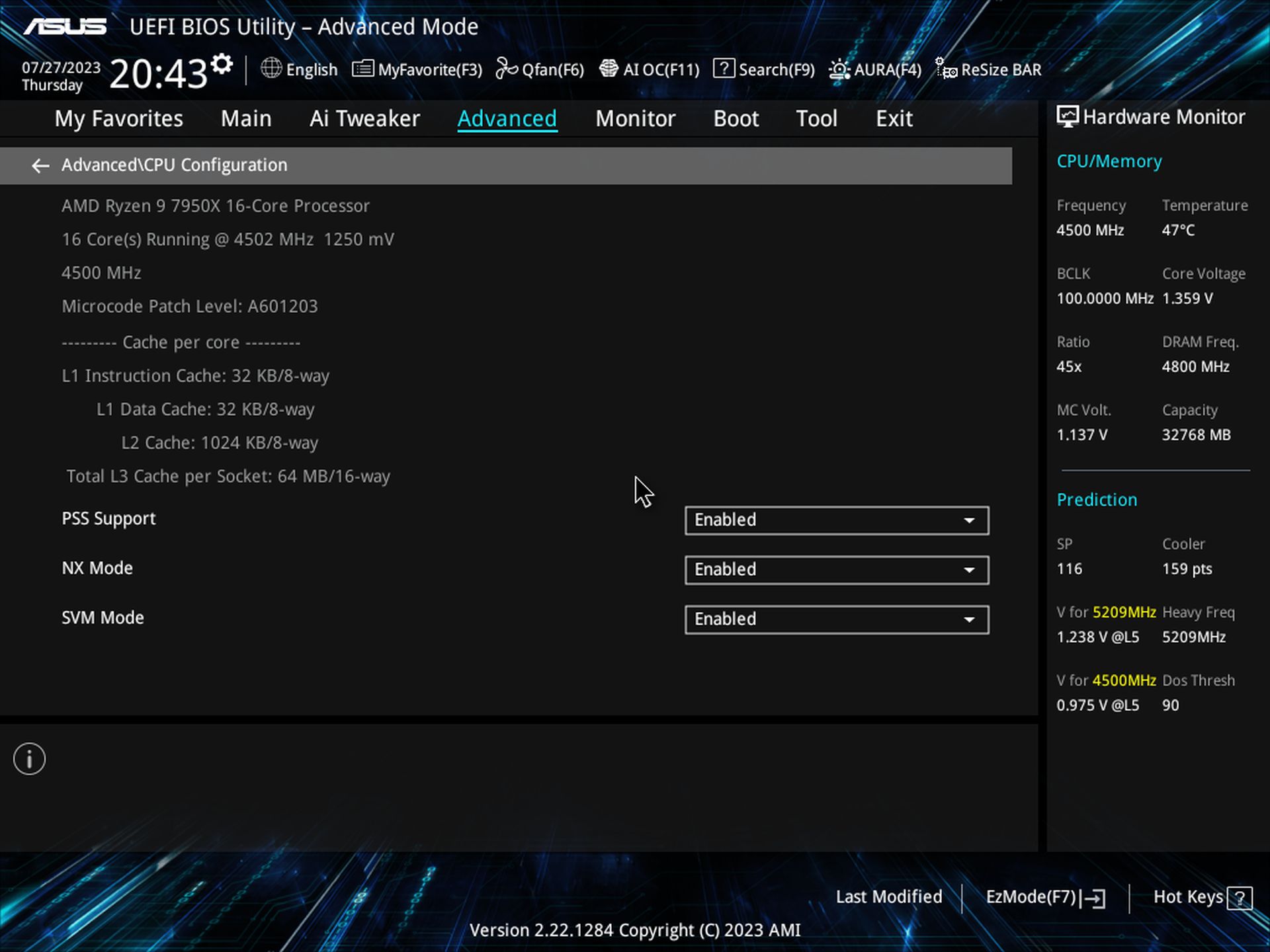


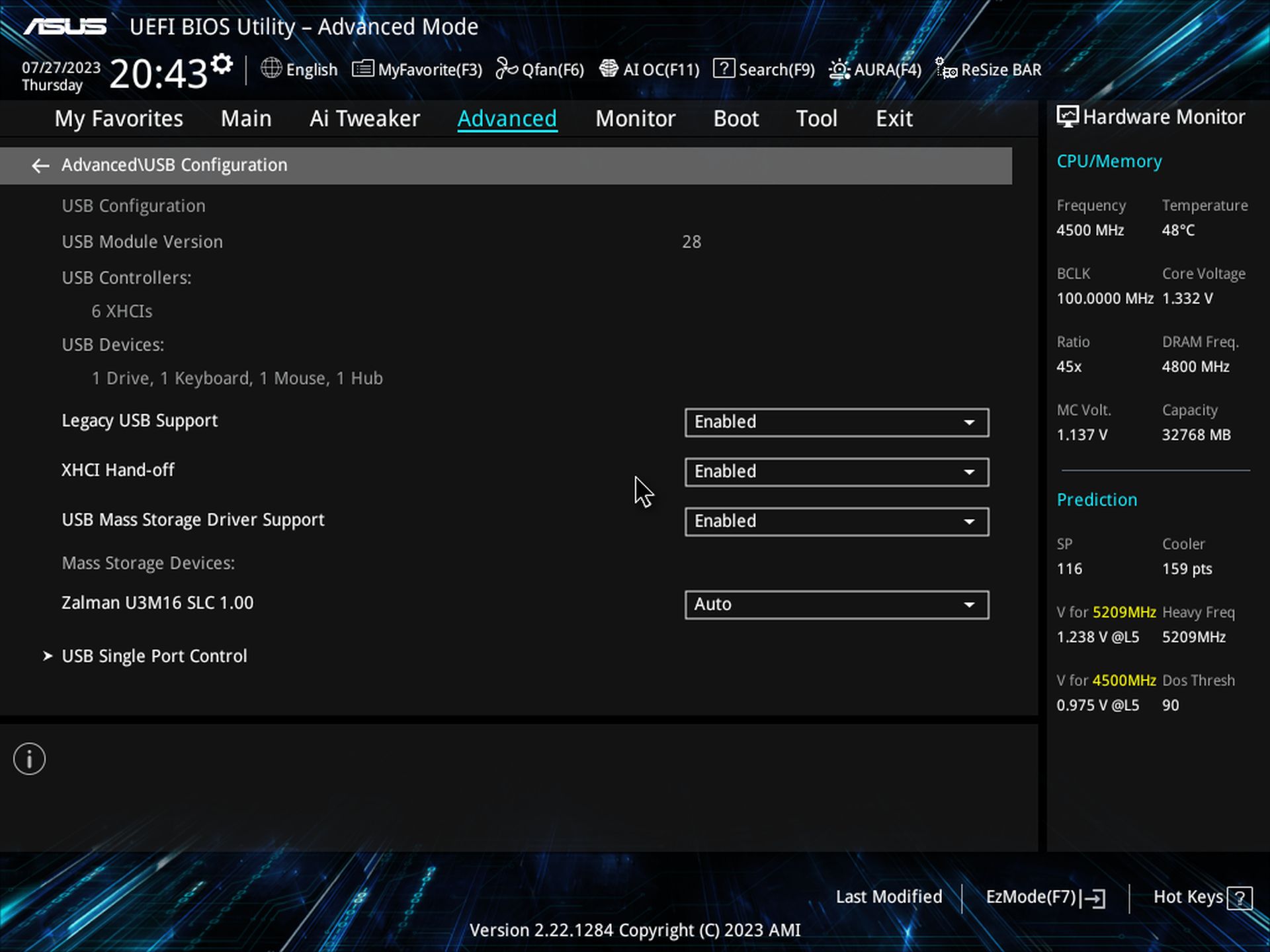
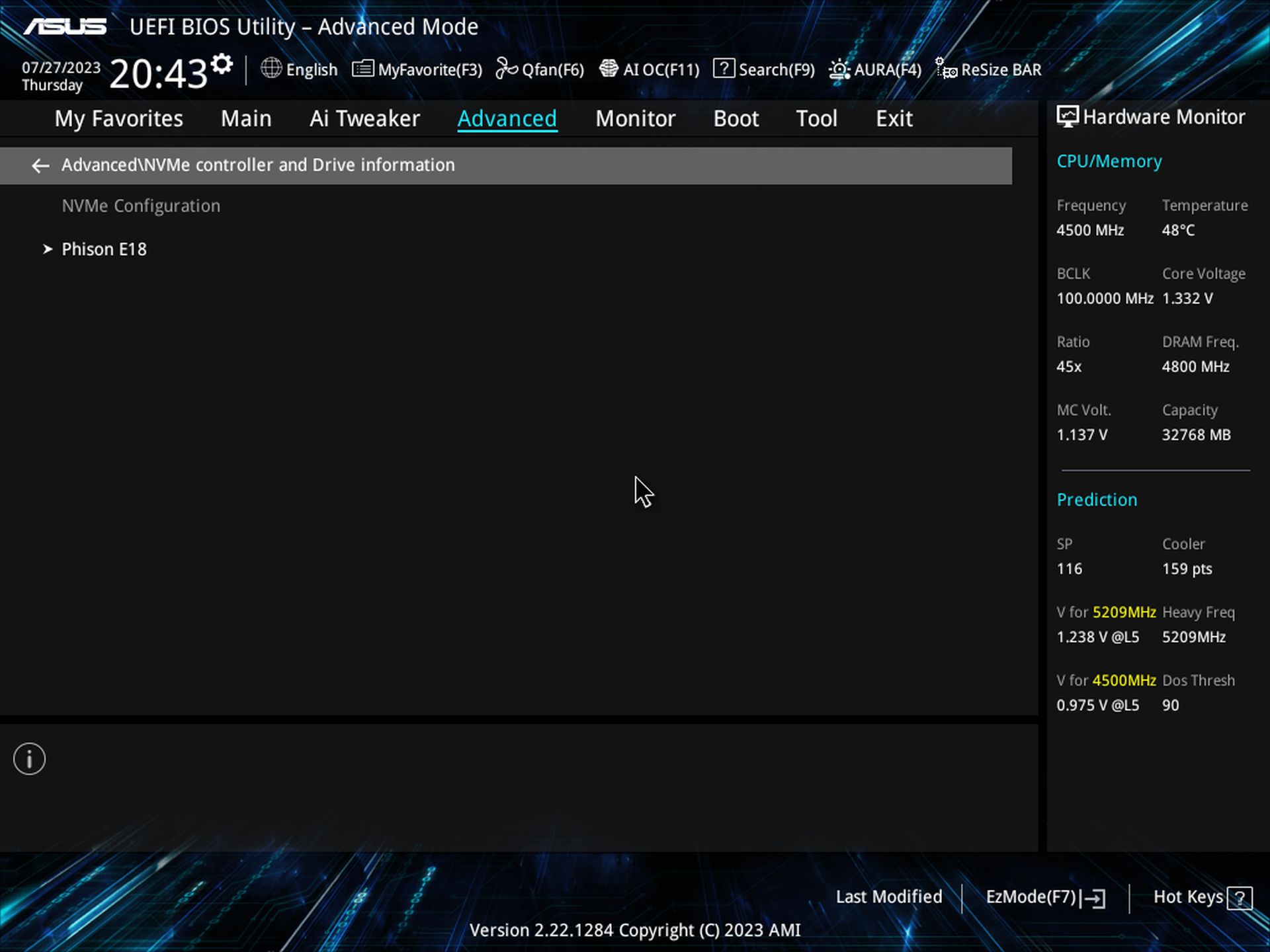
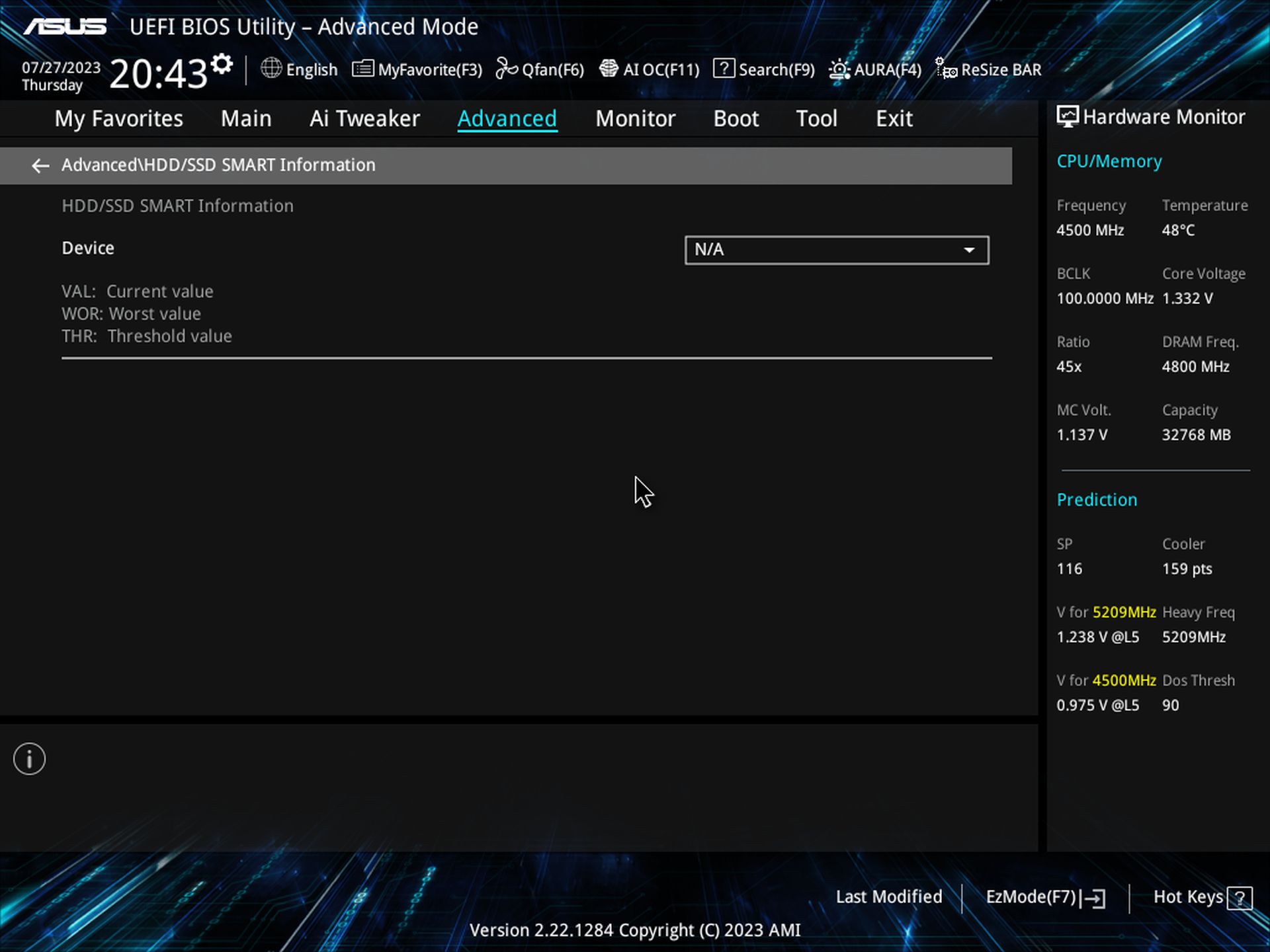
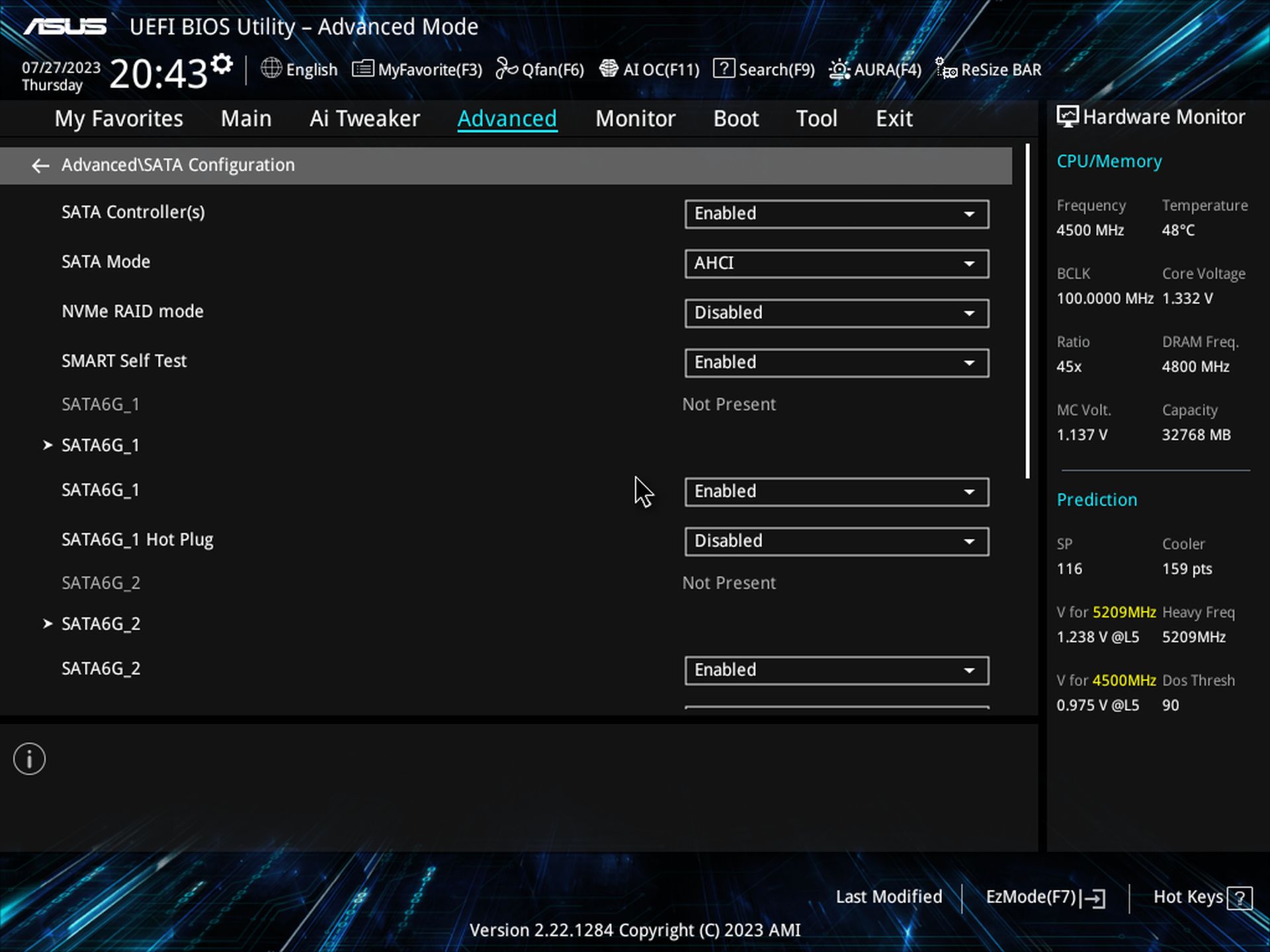
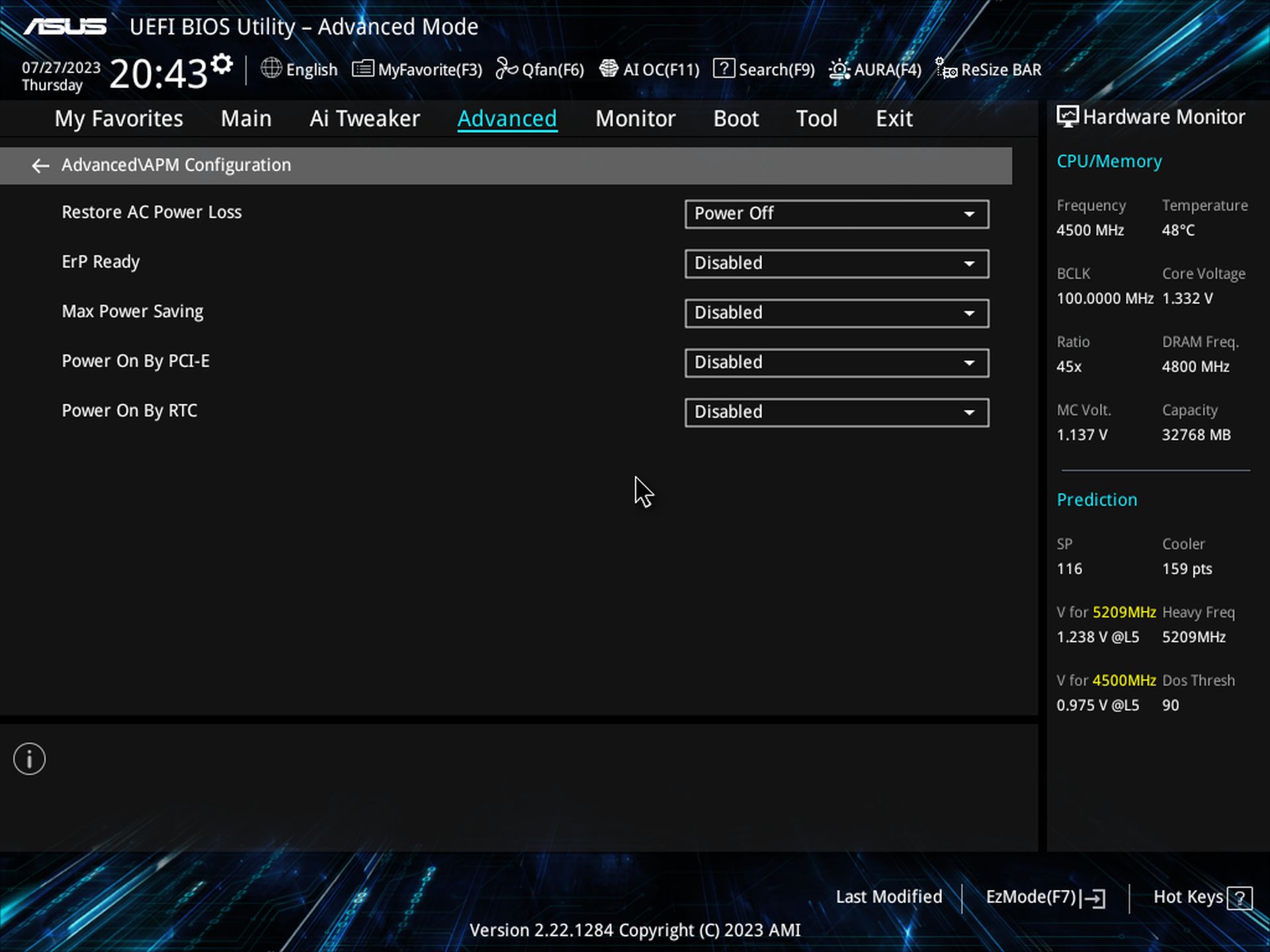
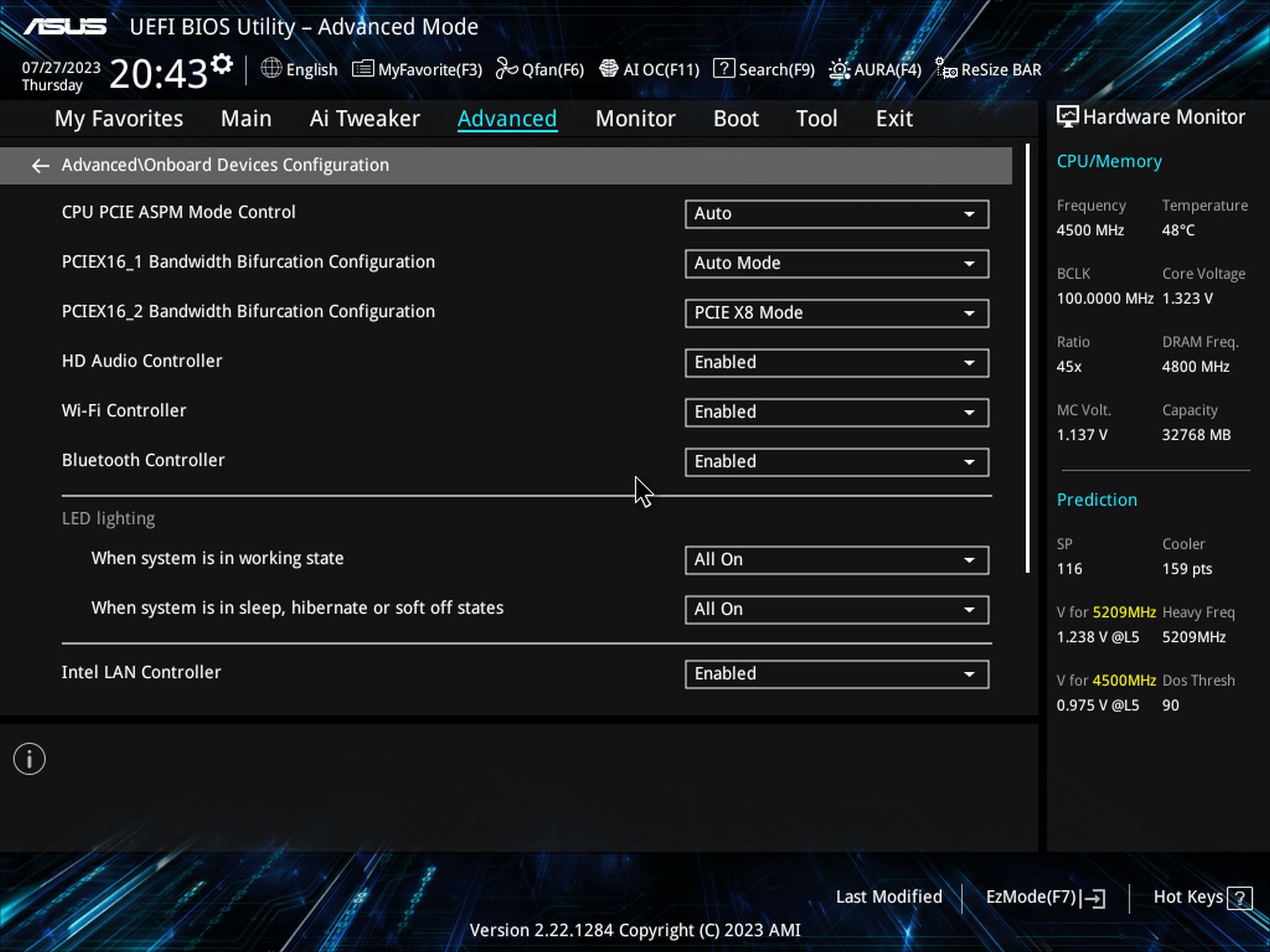
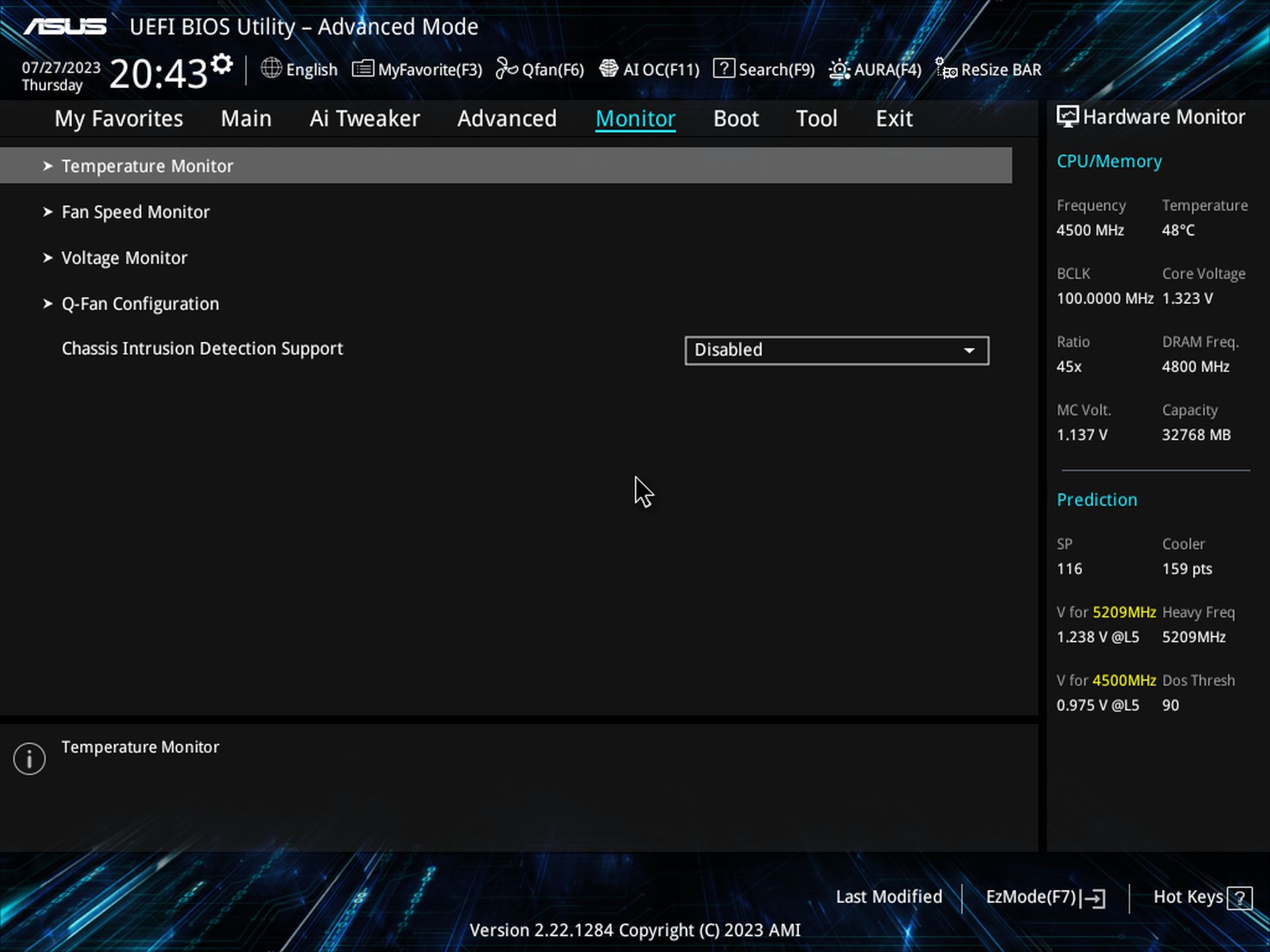


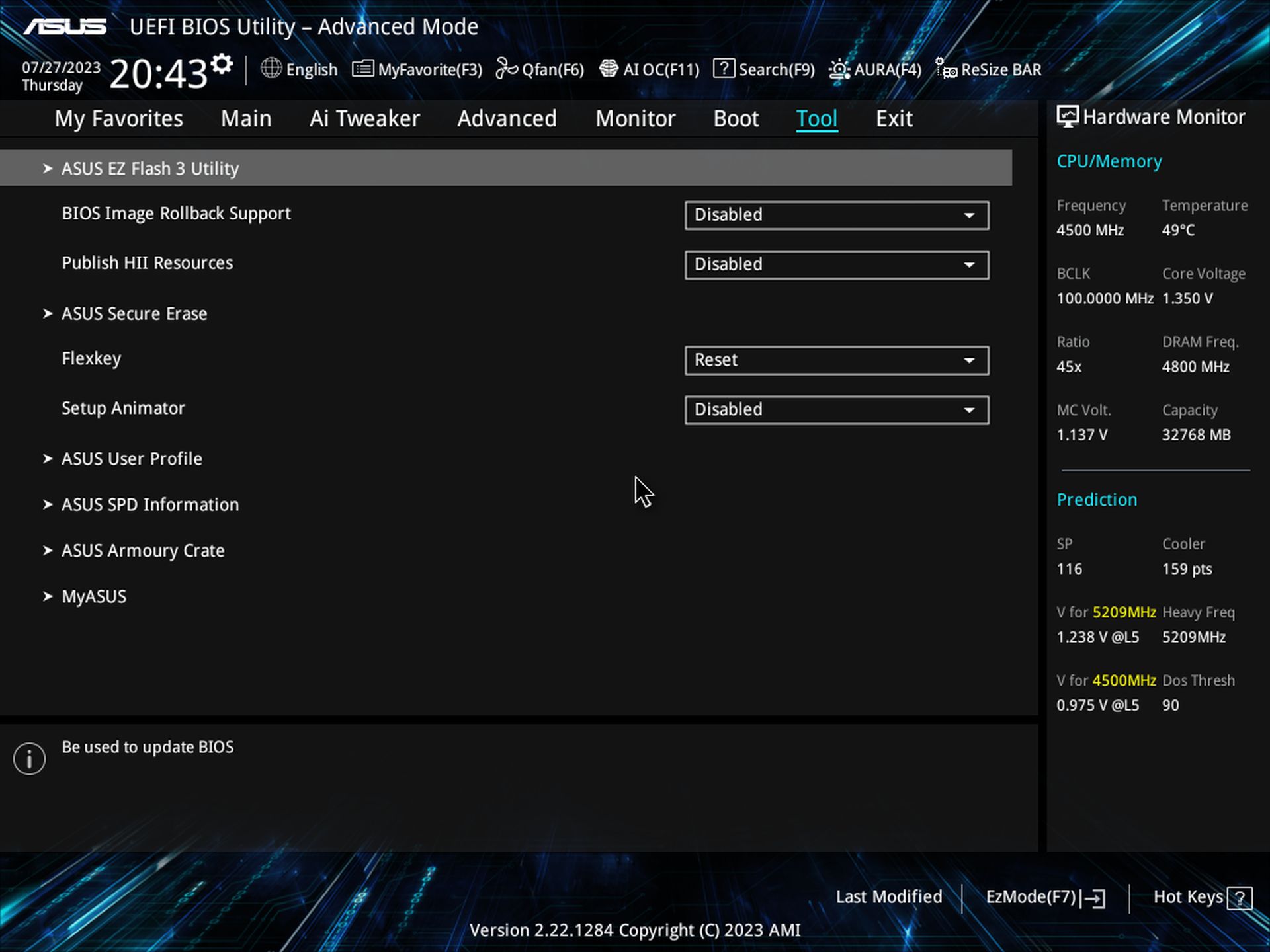
Software
Asus’ software suite for the ProArt is similar to others in the lineup but adds the Asus Control Center Express along with the Armory Crate. The latter uses a ProArt-inspired theme. There are several applications for various functions, ranging from RGB lighting control, audio, system monitoring, overclocking, etc. We’ve captured several screenshots of the applications below. Here’s a look at Ai Suite 3, Armoury Crate, Sonic studio and the Realtek Audio application.
ProArt series boards also offer access to advanced security management functions through Asus Control Center Express. The software allows users to lock USB ports, remotely disable the registry editor on remote devices and provides a software blacklist to prevent using high-risk applications.

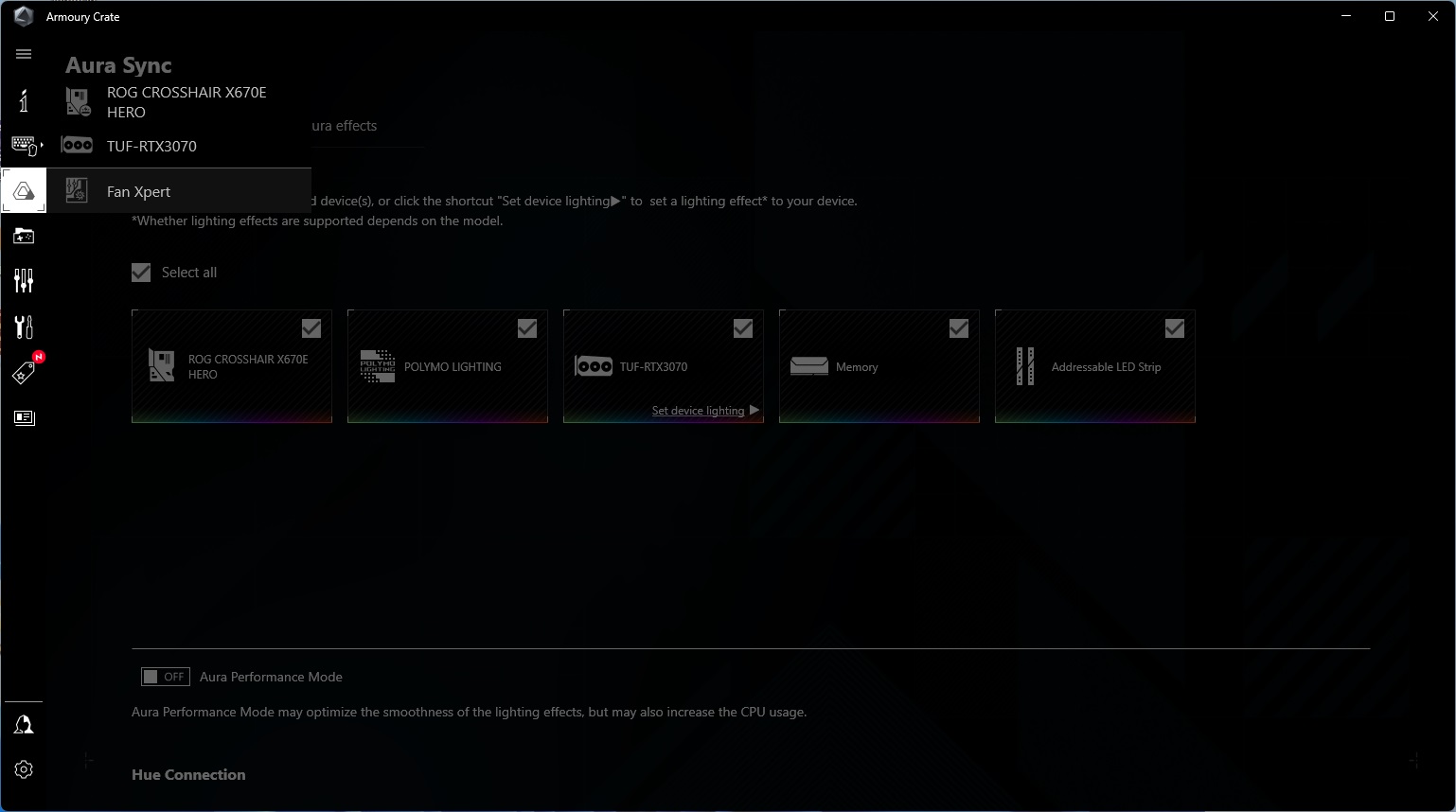

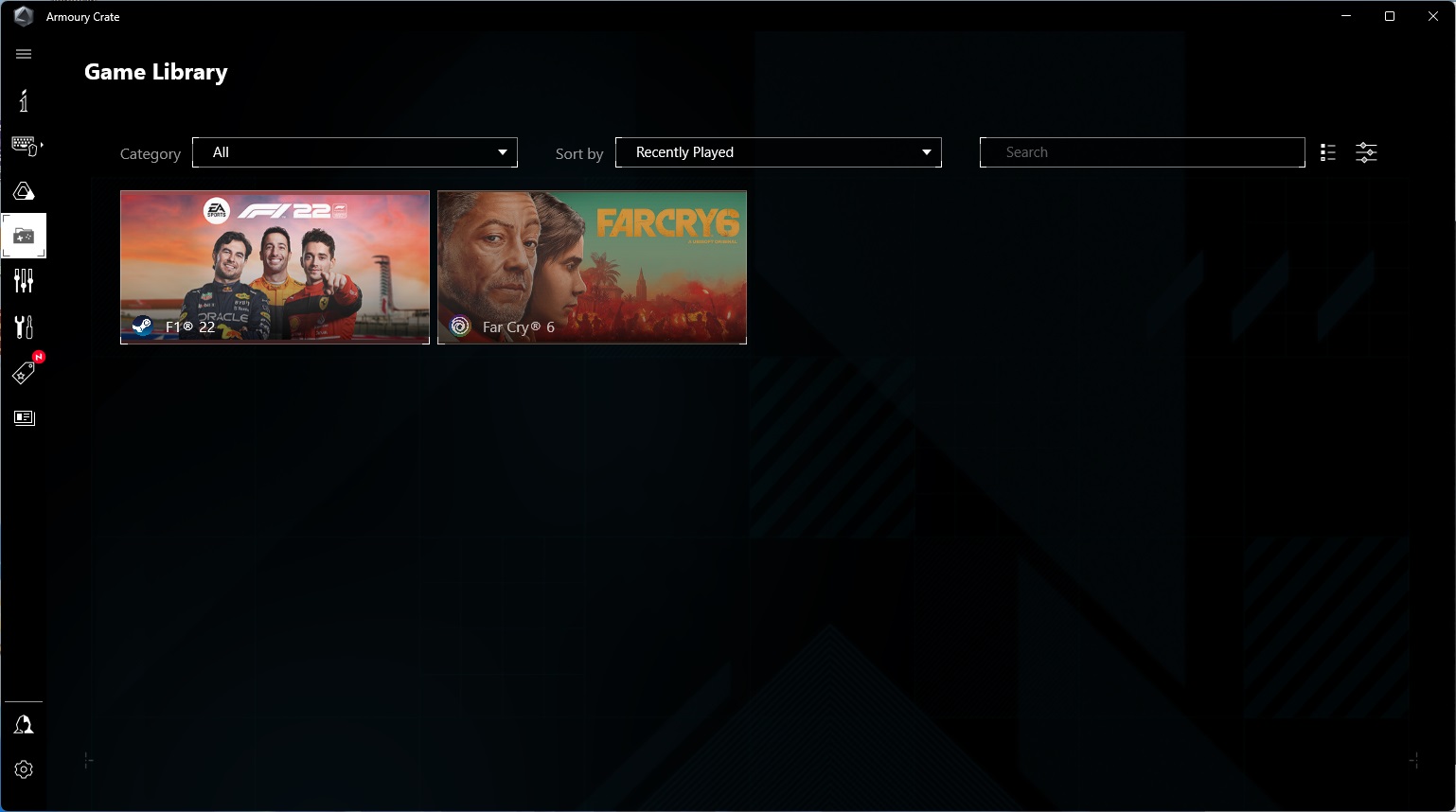
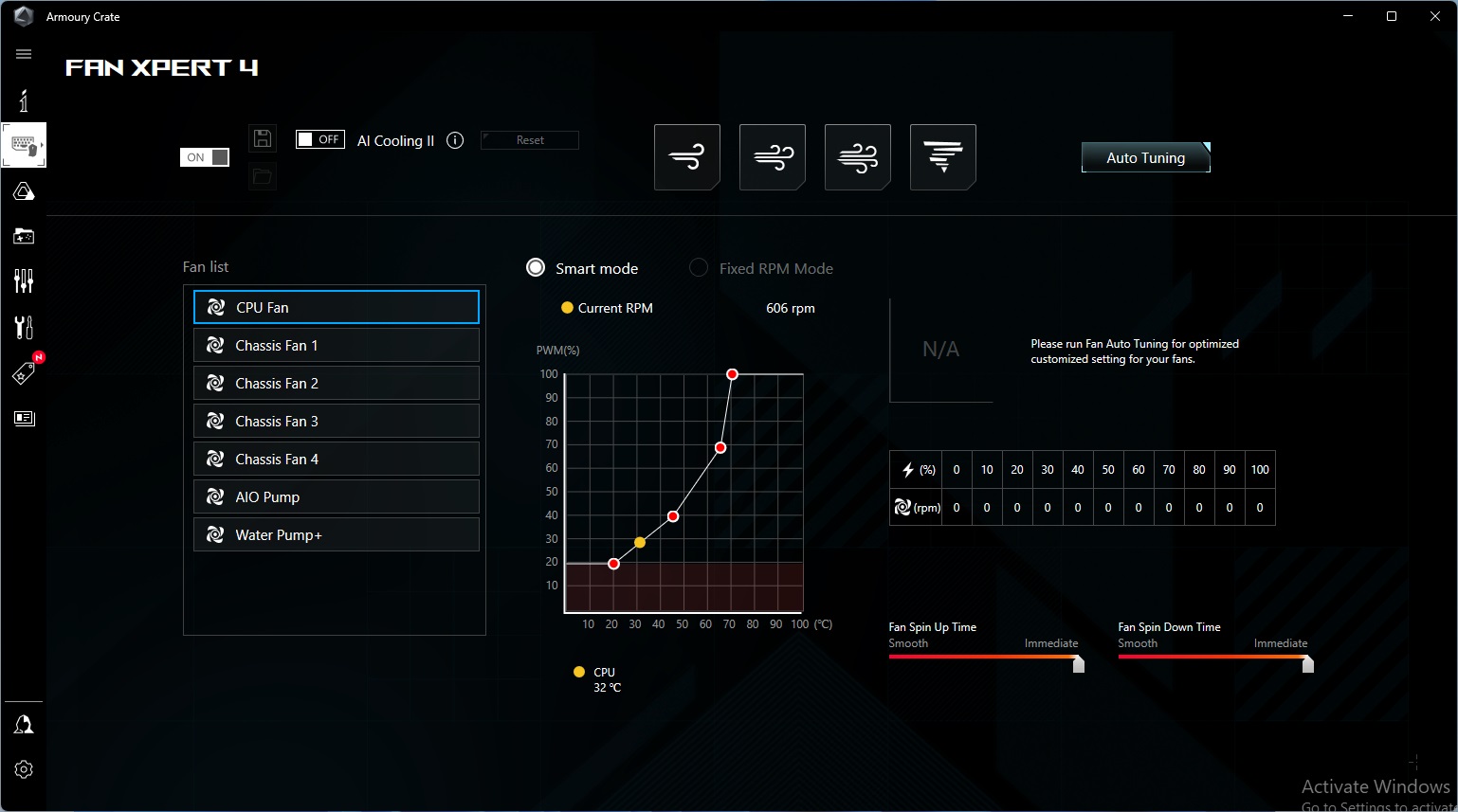
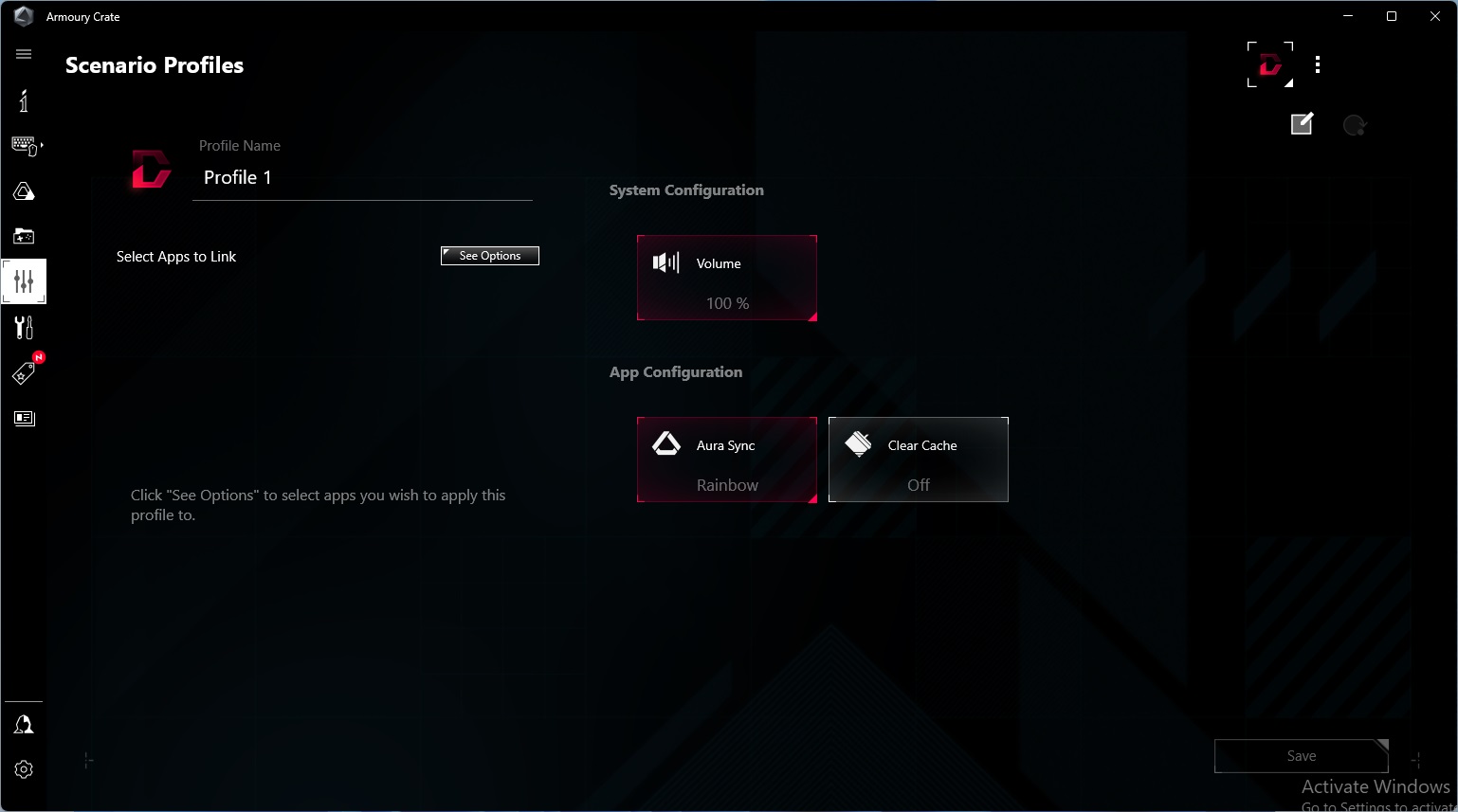
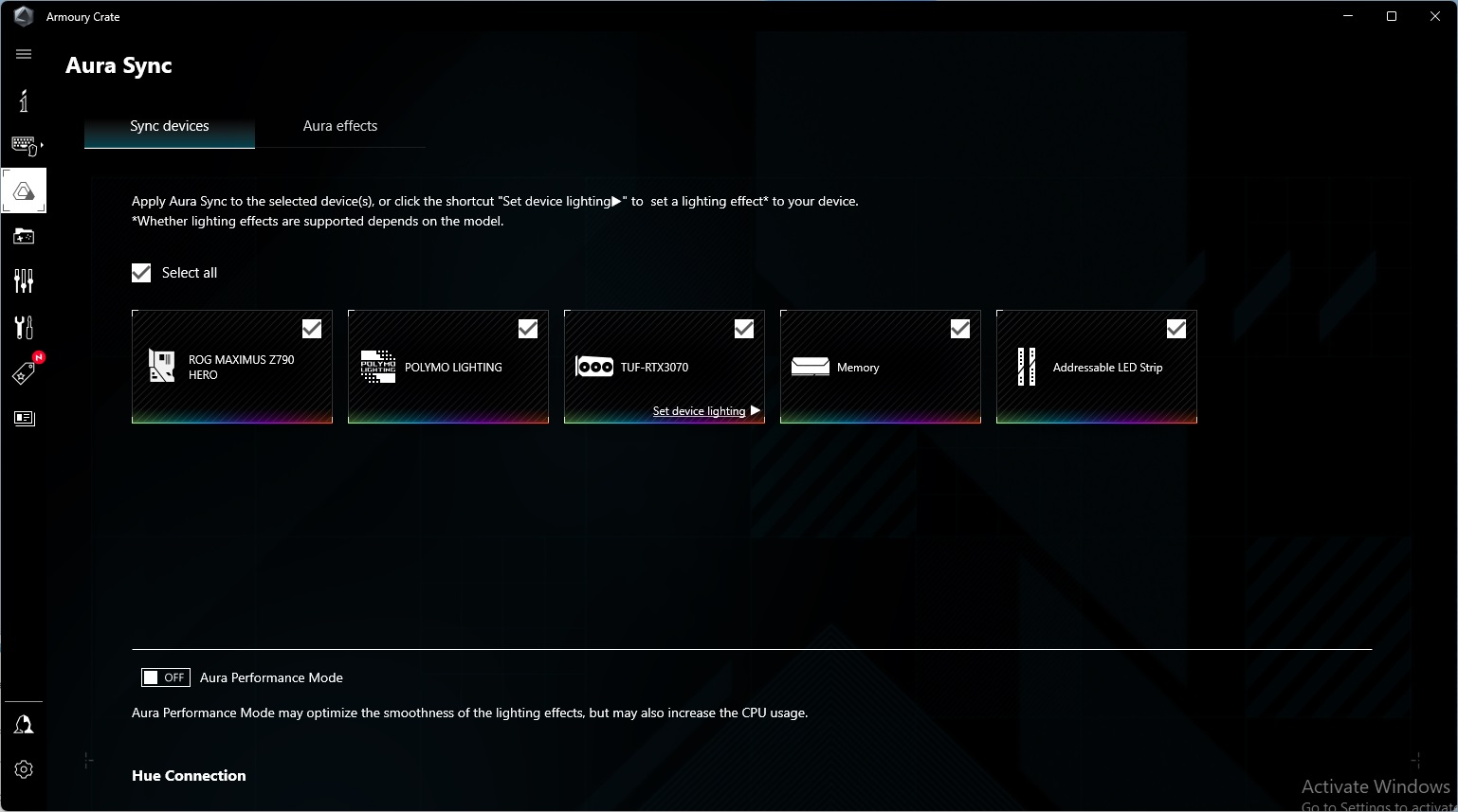


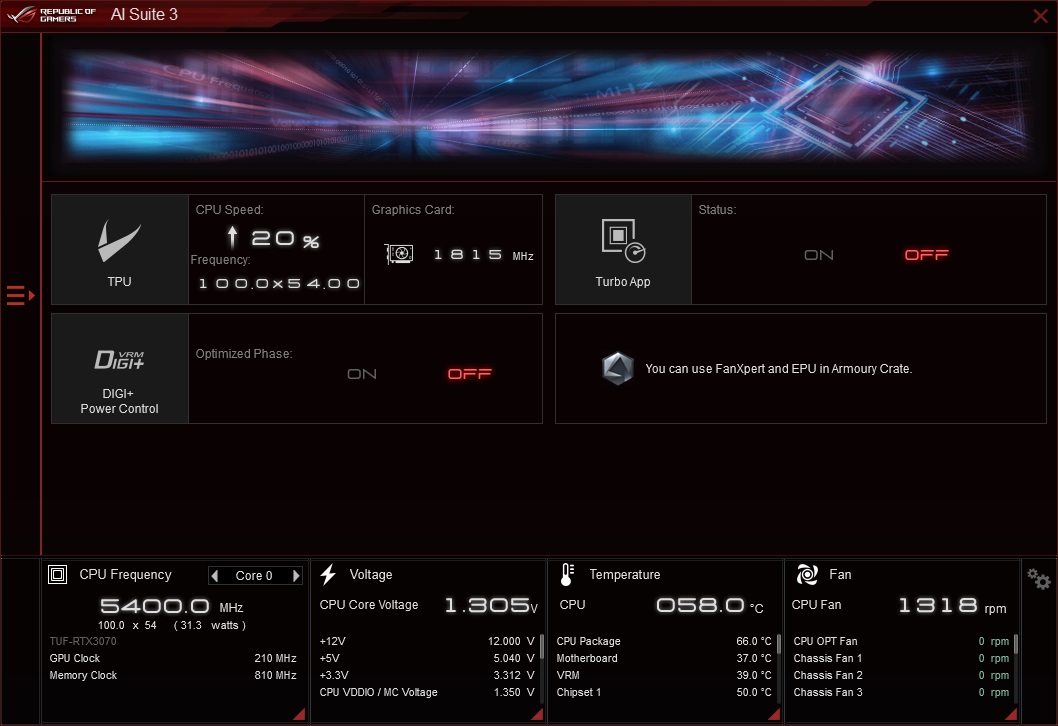

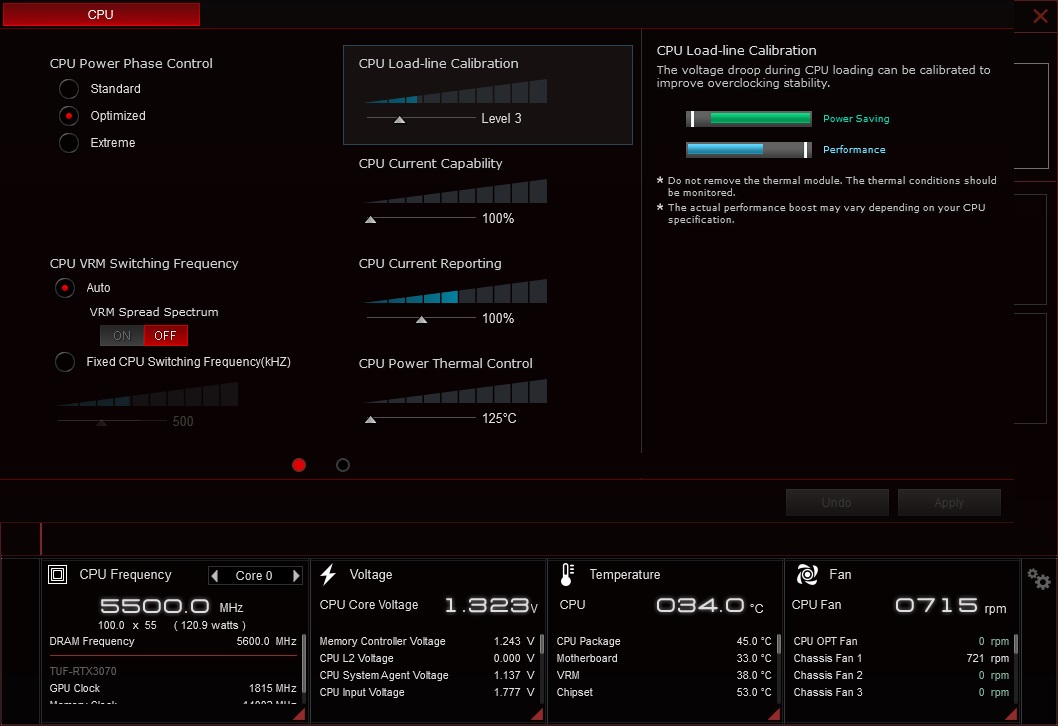
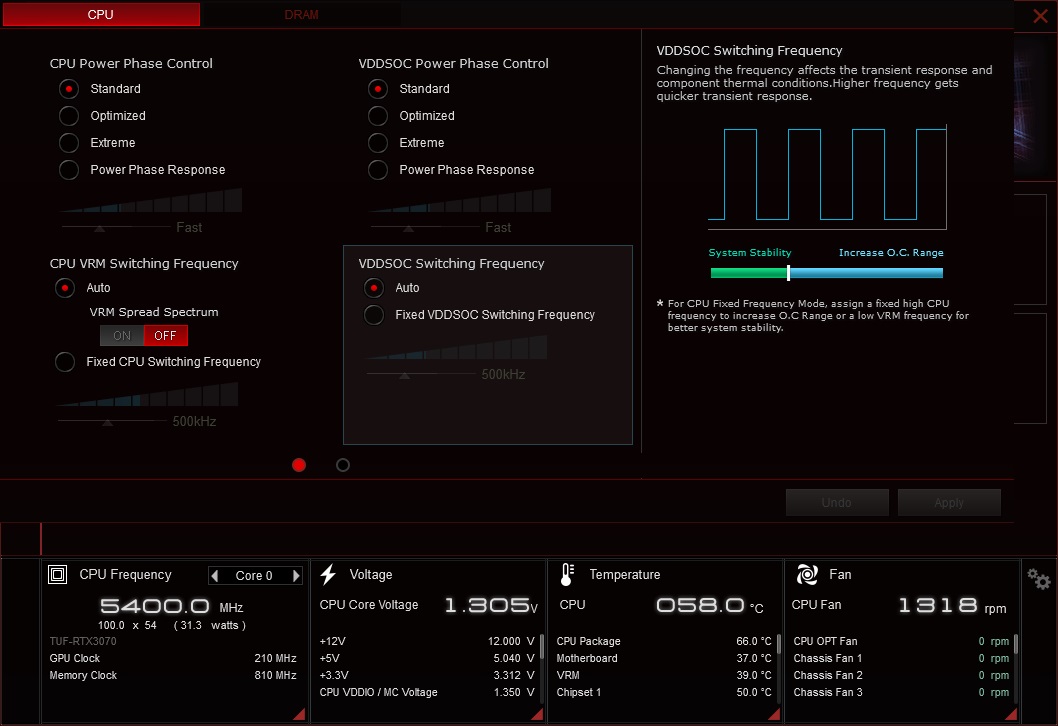

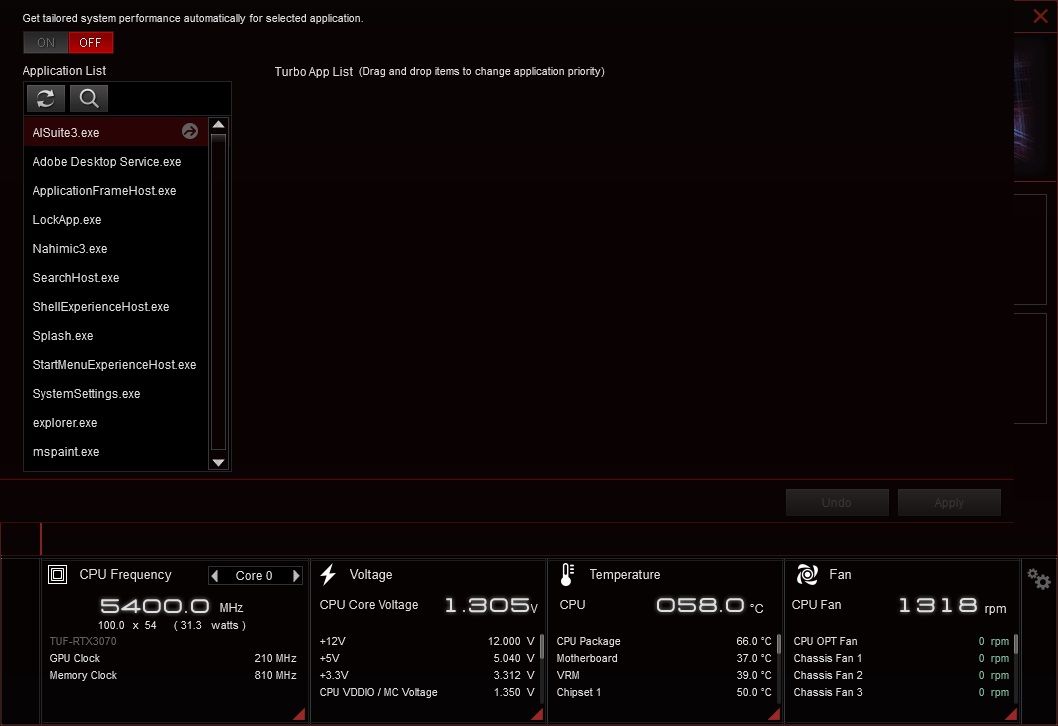
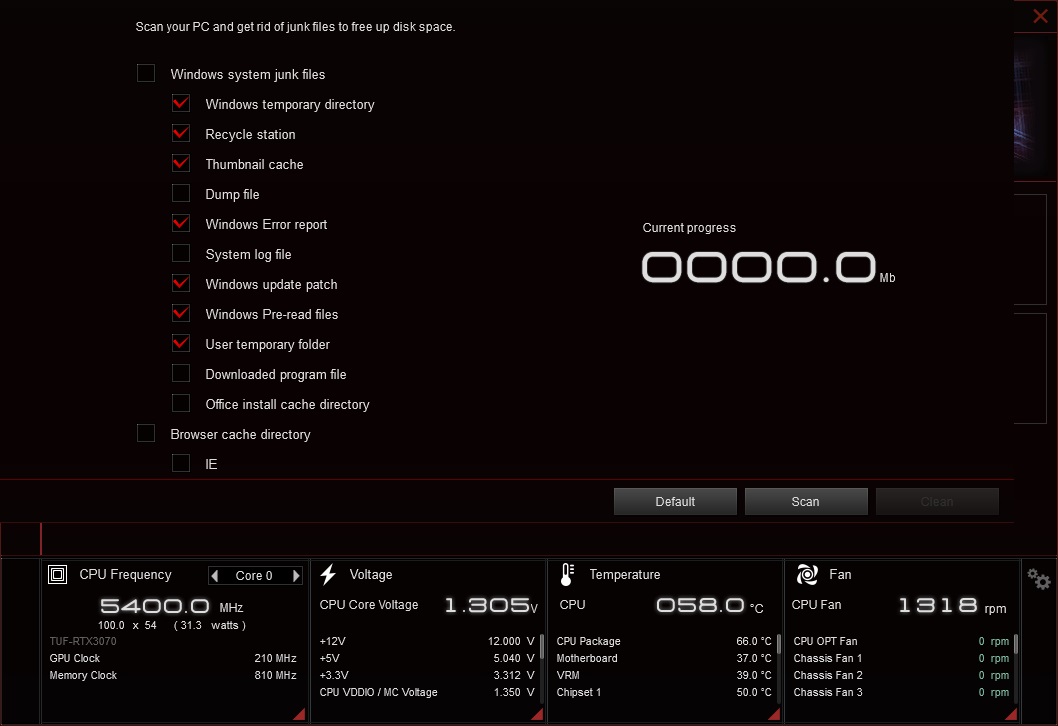
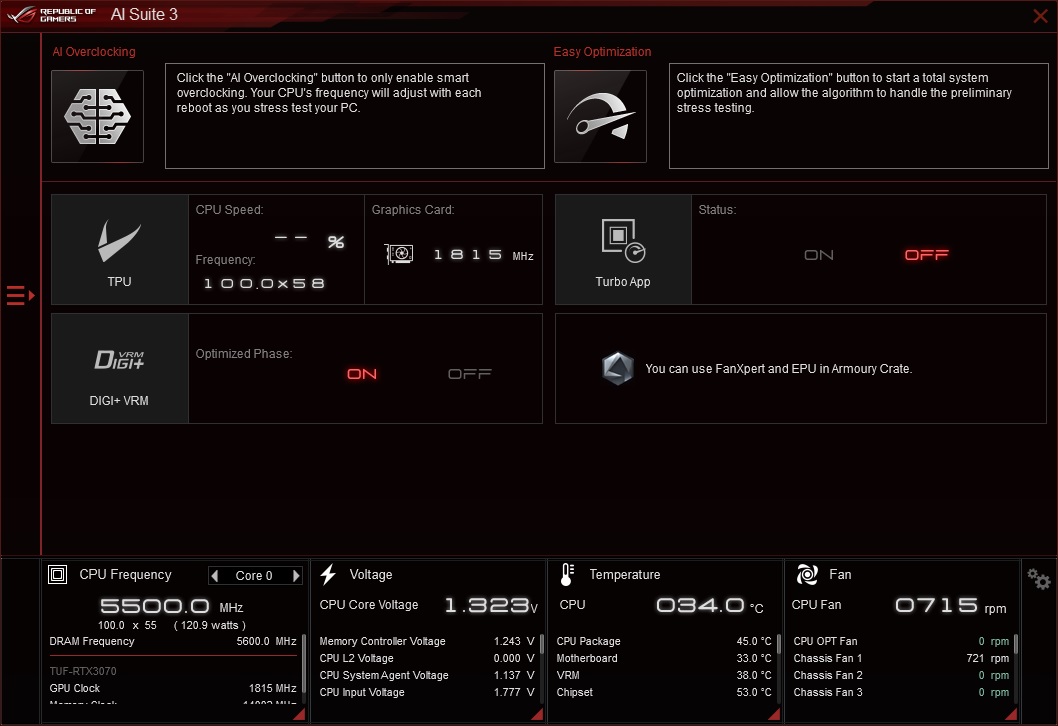

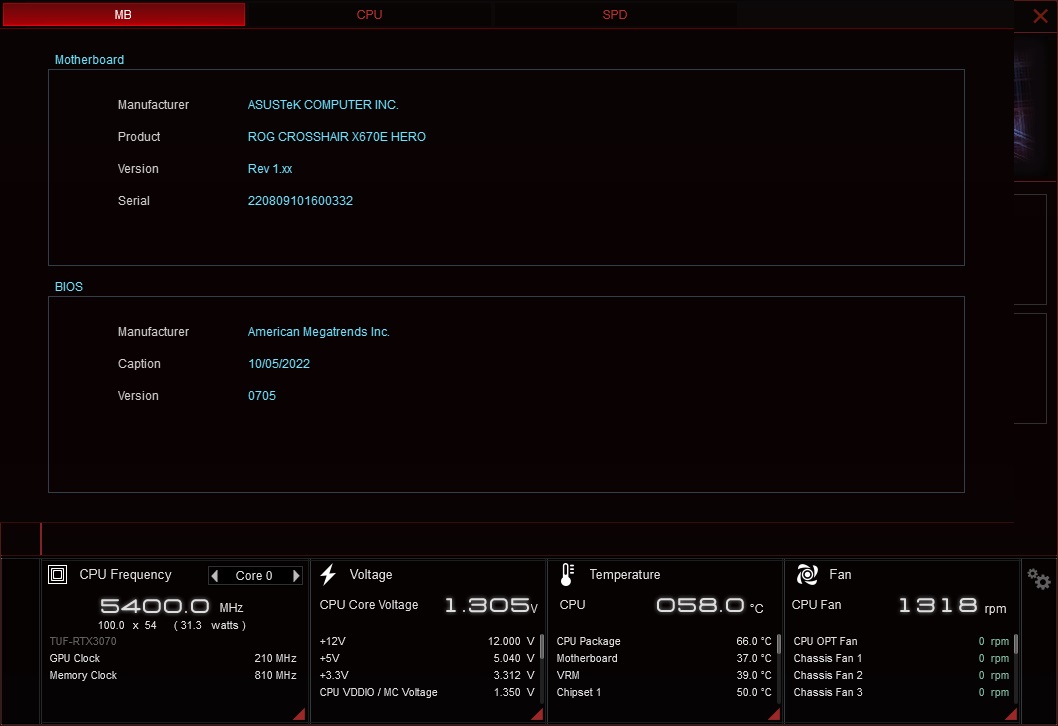

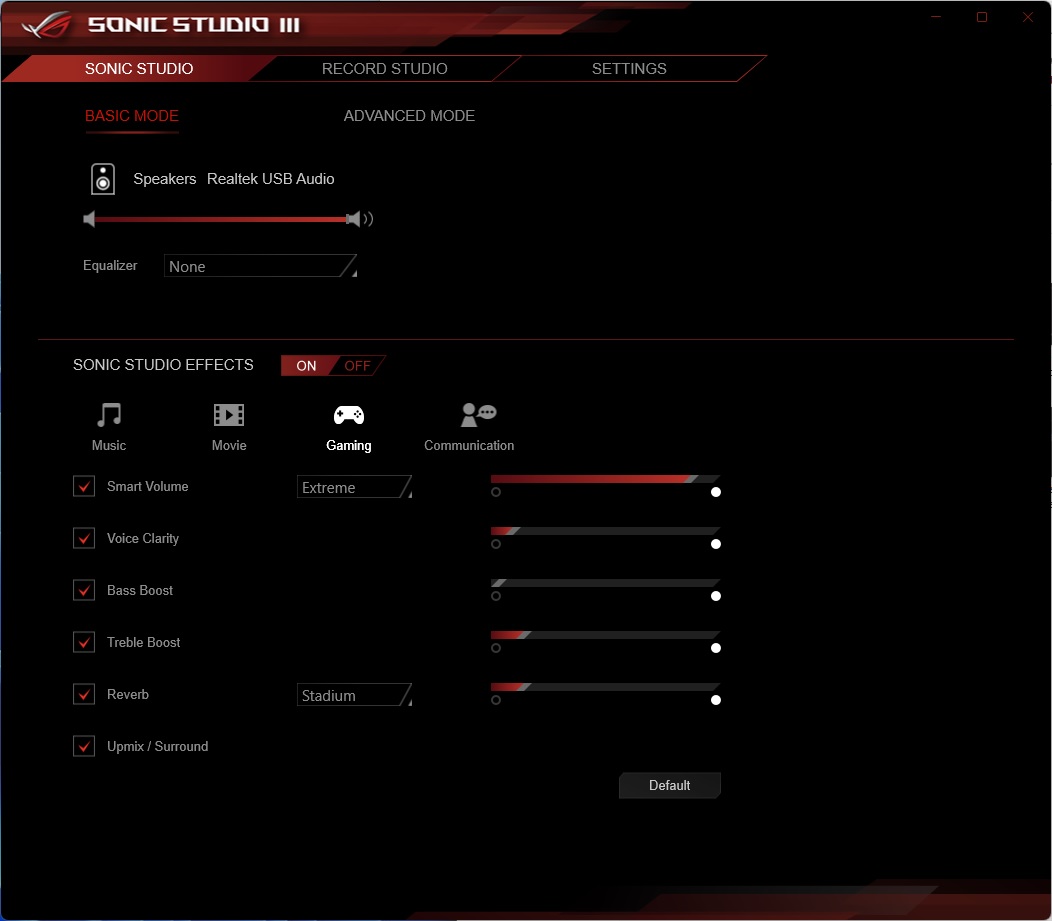

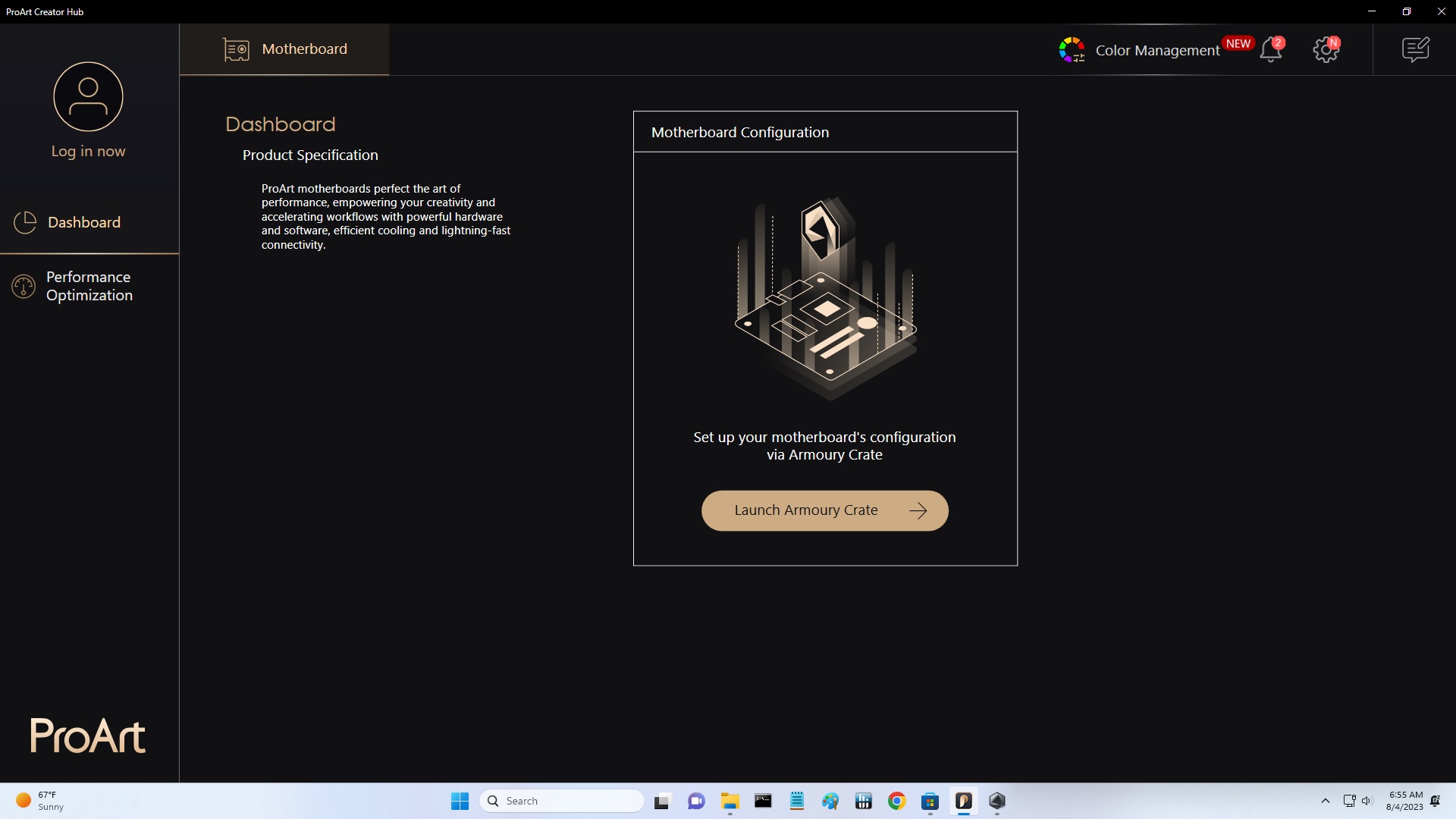
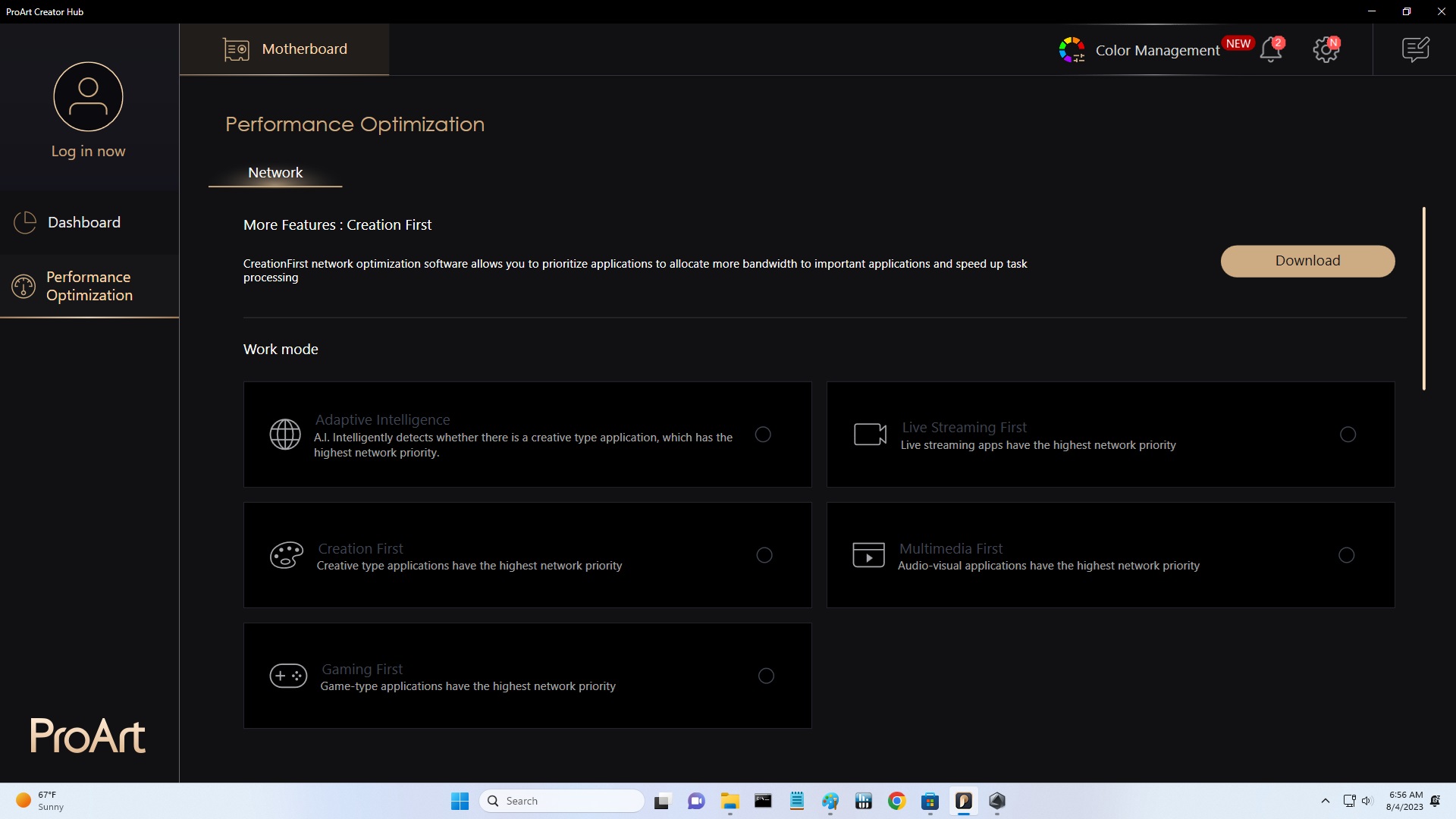
Test System / Comparison Products
We’ve updated our test system to Windows 11 64-bit OS with all updates applied. We kept the same Asus TUF RTX 3070 video card from our previous testing platforms but updated the driver. Additionally, we updated to F1 22 in our games suite and kept Far Cry 6. We use the latest non-beta motherboard BIOS available to the public unless otherwise noted. The hardware we used is as follows:
Test System Components
| CPU | AMD Ryzen 9 7950X |
| Memory | GSkill Trident Z DDR5-5600 CL36 (F5-5600U3636C16GX2-TZ5RK) |
| Row 2 - Cell 0 | Kingston Fury Beast DDR5-6000 CL36 (KF560C36BBEAK2-32) |
| GPU | Asus TUF RTX 3070 |
| Cooling | Cooler Master MasterLiquid PL360 Flux |
| PSU | EVGA Supernova 850W P6 |
| Software | Windows 11 64-bit (22H2, Build 22622.601) |
| Graphics Driver | Nvidia Driver 522.25 |
| Sound | Integrated HD audio |
| Network | Integrated Networking (GbE or 2.5 GbE) |
EVGA supplied our Supernova 850W P6 power supply (appropriately sized and more efficient than the 1.2KW monster we used previously) for our test systems, and G.Skill sent us a DDR5-5600 (F5-5600U3636C16GX2-TZ5RK) memory kit for testing.
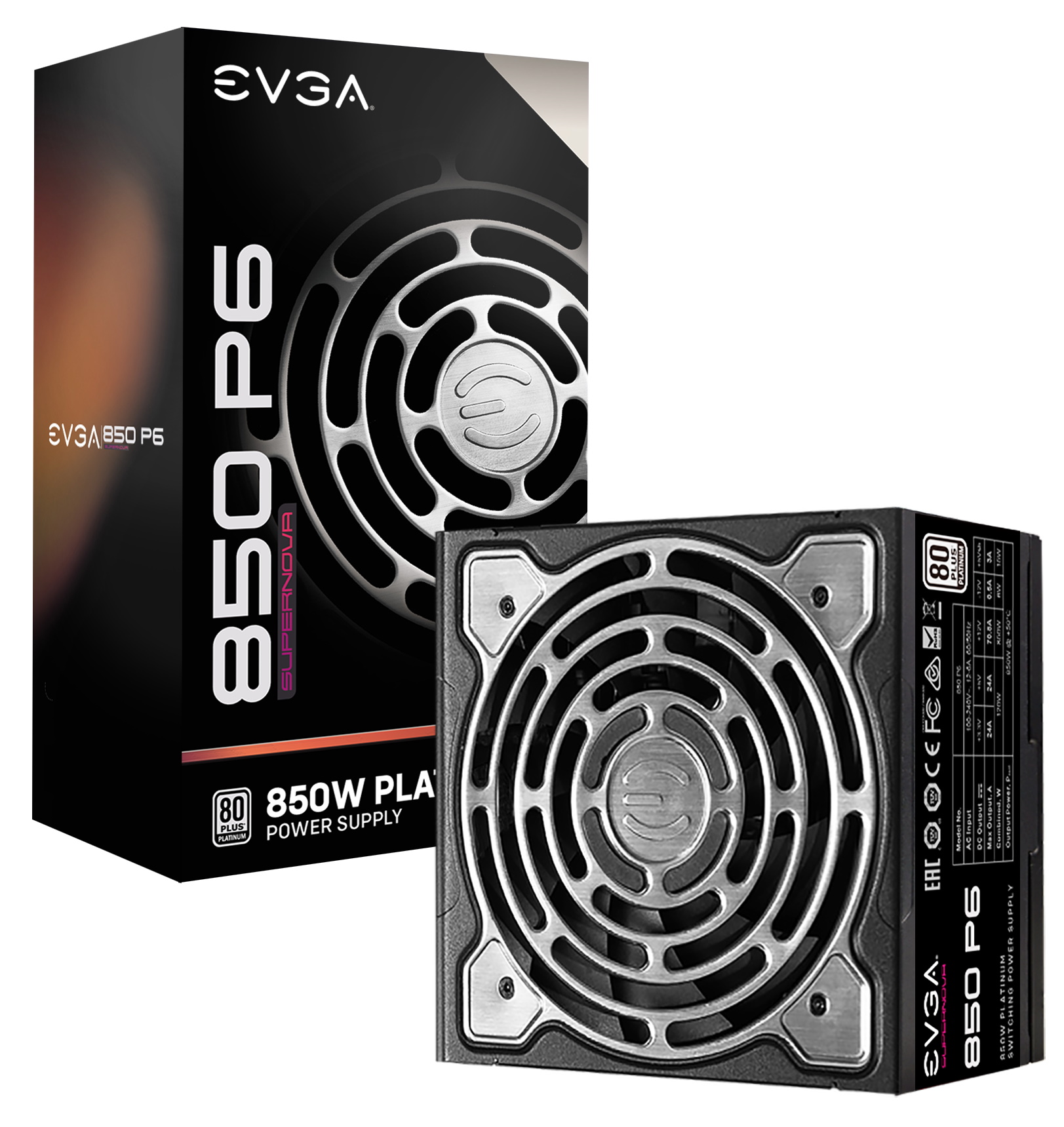

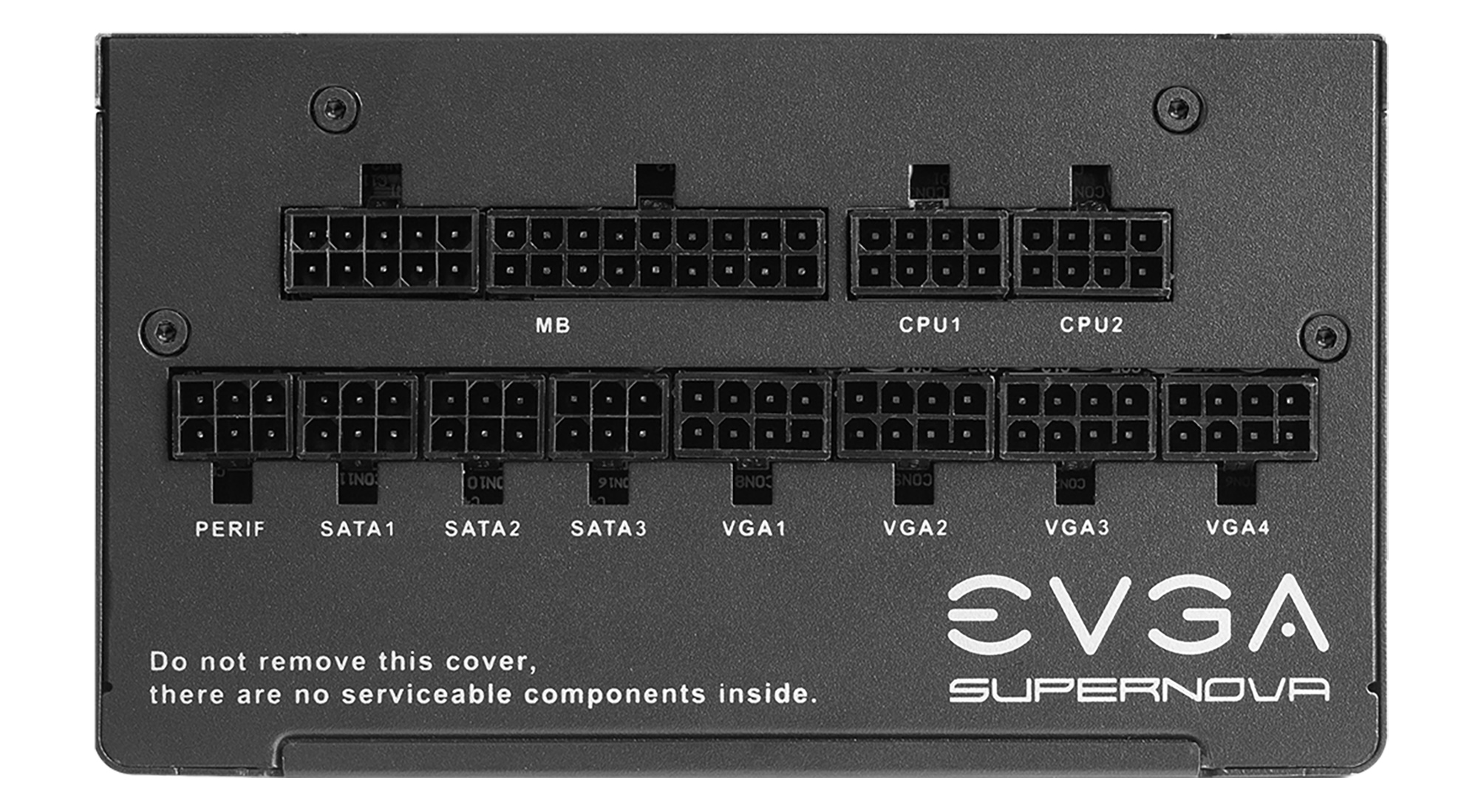


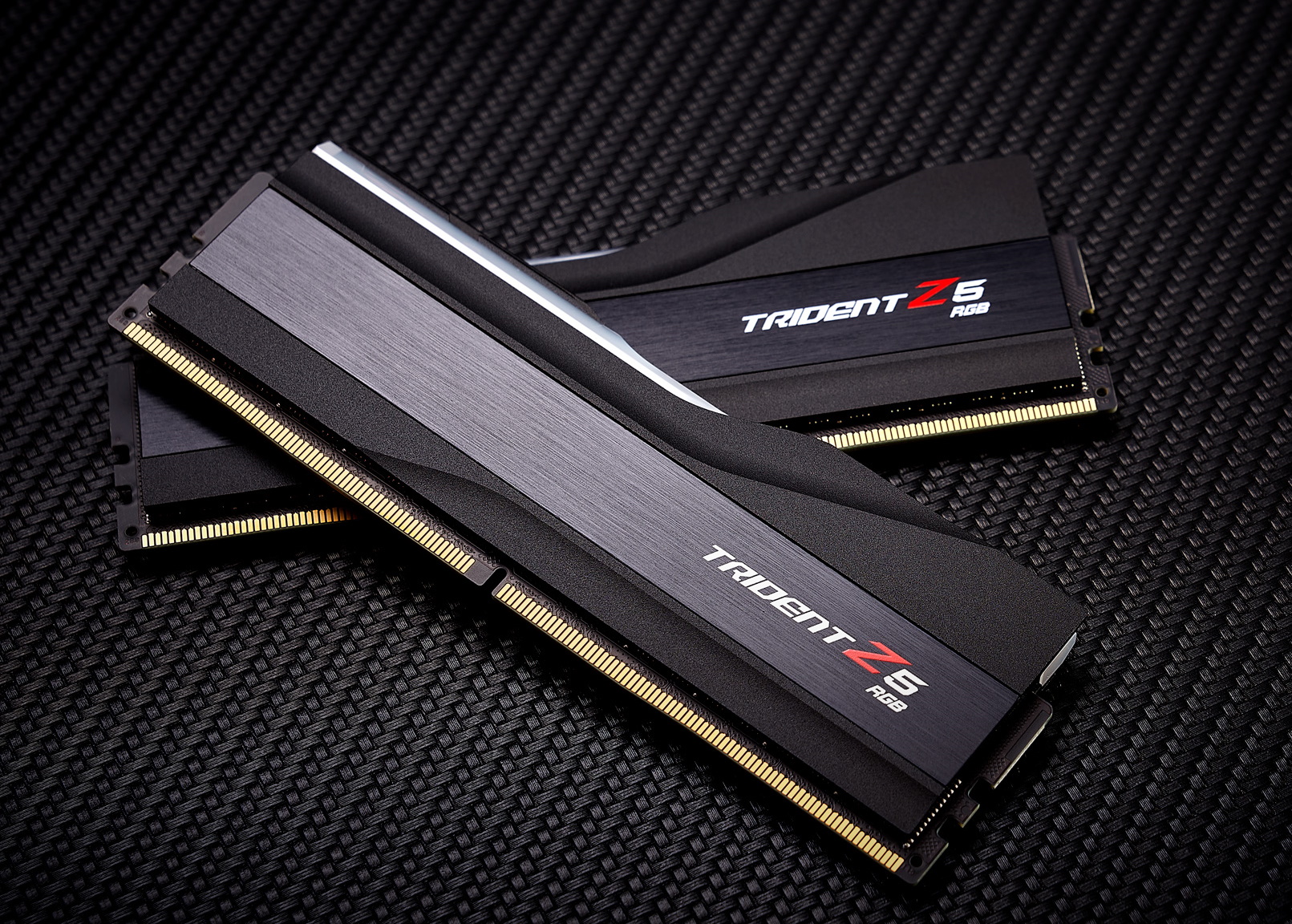

Benchmark Settings
| Synthetic Benchmarks and Settings | Row 0 - Cell 1 |
| Procyon | Version 2.1.459 64 |
| Row 2 - Cell 0 | Office Suite (Office 365), Video Editing (Premiere Pro 22.6.2.2), Photo Editing (Photoshop 23.5.1, Lightroom Classic 11.5) |
| 3DMark | Version 2.22.7359 64 |
| Row 4 - Cell 0 | Firestrike Extreme and Time Spy Default Presets |
| Cinebench R23 | Version RBBENCHMARK330542 |
| Row 6 - Cell 0 | Open GL Benchmark - Single and Multi-threaded |
| Blender | Version 3.3.0 |
| Row 8 - Cell 0 | Full benchmark (all 3 tests) |
| Application Tests and Settings | Row 9 - Cell 1 |
| LAME MP3 | Version SSE2_2019 |
| Row 11 - Cell 0 | Mixed 271MB WAV to mp3: Command: -b 160 --nores (160Kb/s) |
| HandBrake CLI | Version: 1.2.2 |
| Row 13 - Cell 0 | Sintel Open Movie Project: 4.19GB 4K mkv to x264 (light AVX) and x265 (heavy AVX) |
| Corona 1.4 | Version 1.4 |
| Row 15 - Cell 0 | Custom benchmark |
| 7-Zip | Version 21.03-beta |
| Row 17 - Cell 0 | Integrated benchmark (Command Line) |
| Game Tests and Settings | Row 18 - Cell 1 |
| Far Cry 6 | Ultra Preset - 1920 x 1080, HD Textures On |
| F1 2022 | Ultra Preset - 1920 x 1080, Ultra High (default) Bahrain (Clear/Dry), FPS Counter On |
MORE: Best Motherboards
MORE: How To Choose A Motherboard
Get Tom's Hardware's best news and in-depth reviews, straight to your inbox.
MORE: All Motherboard Content
Current page: Firmware, Software and Test System
Prev Page Features and Specifications Next Page Benchmarks and Final Analysis
Joe Shields is a staff writer at Tom’s Hardware. He reviews motherboards and PC components.
-
evdjj3j If anyone else is wondering what DP input is for here is a discussion in the forum.Reply
https://forums.tomshardware.com/threads/what-is-displayport-input-for.3737542/#post-22534507 -
TJ Hooker It kind of looks like this motherboard may support ECC memory (ECC UDIMMs, not just the standard DDR5 on-die ECC), is there any chance you could test that?Reply
Edit: According to the BIOS manual, there is a BIOS setting to enable/disable ECC: Advanced > AMD CBS > ECC
I'm not seeing anything like that in your BIOS screenshots though. -
atomicWAR Anything with less than 6 SATA ports is a hard pass for me. This is excatly why my wife and I both went with Asrock x670E Taichi based platforms with 8 SATA ports of which I am actively using seven, six connected to 20TB drives with room for one more (mixed drives her as well but all ports) and one running my case's external 3.5 HDD SATA test bay which I use regularly enough as well. I even have my HD DVD/Blu-ray player combo drive connected via an USB to sata adapter to free up SATA ports for drives. More SATA is always better for creators.Reply -
Amdlova Reply
Nah... you need five nvme drivers on the board... sata is something from the past! (Joke mod).atomicWAR said:Anything with less than 6 SATA ports is a hard pass for me. This is excatly why my wife and I both went with Asrock x670E Taichi based platforms with 8 SATA ports of which I am actively using seven, six connected to 20TB drives with room for one more (mixed drives her as well but all ports) and one running my case's external 3.5 HDD SATA test bay which I use regularly enough as well. I even have my HD DVD/Blu-ray player combo drive connected via an USB to sata adapter to free up SATA ports for drives. More SATA is always better for creators.
I agree with you if I have a ton of storage sata ports is a must! Six is the bare miminum.
My board today has four slots need to disconnect to test the hard drives from my costumers... it's a pain! -
lunar.holiday Reply
That's a bit of an outdated use case, and the board design reflects that. Its intention is the use of a NAS (hence the 10GbE port) for mass storage, with very fast SSDs as working drives. If you're still going with all internal drives, then this may not be the best option unless you add sata expansions. In my case, I run a raid 5 nas with four nvme drives. The photo/video editing take place on the ssds, then get offloaded to enterprise nas drives for archival. It's a pretty common workflow now with certain advantages of bulk internal storage, and the board is great for that.atomicWAR said:Anything with less than 6 SATA ports is a hard pass for me. This is excatly why my wife and I both went with Asrock x670E Taichi based platforms with 8 SATA ports of which I am actively using seven, six connected to 20TB drives with room for one more (mixed drives her as well but all ports) and one running my case's external 3.5 HDD SATA test bay which I use regularly enough as well. I even have my HD DVD/Blu-ray player combo drive connected via an USB to sata adapter to free up SATA ports for drives. More SATA is always better for creators.
Also the other boards missing "only" the 10 gigabit ethernet is a bit bigger deal than they're implying, since just a 10 GbE expansion card will run anywhere from $50-100 for a good one. -
atomicWAR Replylunar.holiday said:That's a bit of an outdated use case, and the board design reflects that. Its intention is the use of a NAS (hence the 10GbE port) for mass storage, with very fast SSDs as working drives. If you're still going with all internal drives, then this may not be the best option unless you add sata expansions. In my case, I run a raid 5 nas with four nvme drives. The photo/video editing take place on the ssds, then get offloaded to enterprise nas drives for archival. It's a pretty common workflow now with certain advantages of bulk internal storage, and the board is great for that.
Also the other boards missing "only" the 10 gigabit ethernet is a bit bigger deal than they're implying, since just a 10 GbE expansion card will run anywhere from $50-100 for a good one.
1st I am old so lol on the outdatedness. 2nd not a huge fan of most purpose built NASes. Had several in the past but prefer PCs built to double as a NAS. Especially since I already run 2 desktops (mine and the wife's)
Thus I use 2 pc's, one as my NAS other as back up...AND I have external enclosure for cold/off site storage I can leave at the inlaw's when not actively using it. Also run 12TB of nvme for active work flow and about to make it 16TB next month. -
o0OHypnoticO0o Reply
Overclocking on AMD is more nuanced than this article takes the time to explore. Just dumping voltage into the CPU is a little archaic. On this platform, fighting thermals is the majority of the fight, so you'll see most overclockers working with undervolting as opposed to just using more power.Admin said:Designed with creators in mind, the Asus ProArt X670E-Creator ($449.99) has an elegant appearance, along with high-end hardware including 10 GbE LAN, USB 4 (40 Gbps) DisplayPort support with DisplayPort input, and dual PCIe 5.0 x4 M.2 sockets.
Asus ProArt X670E-Creator Wi-Fi Review: Creator Connectivity : Read more
